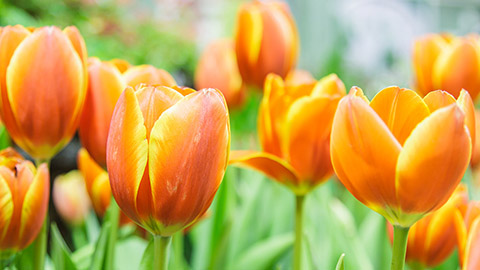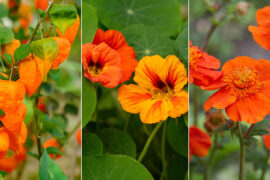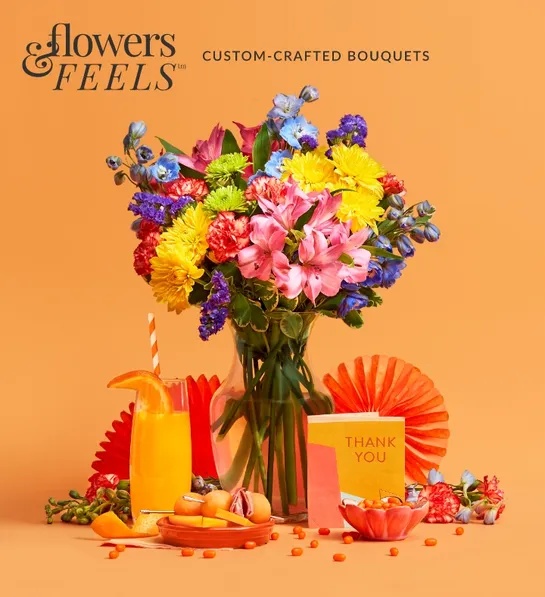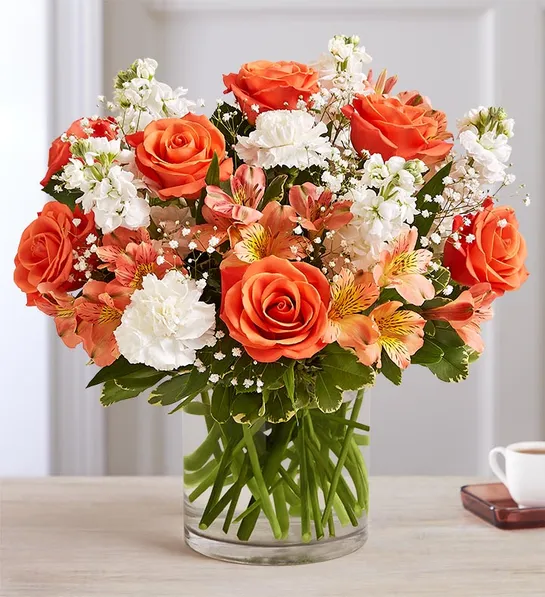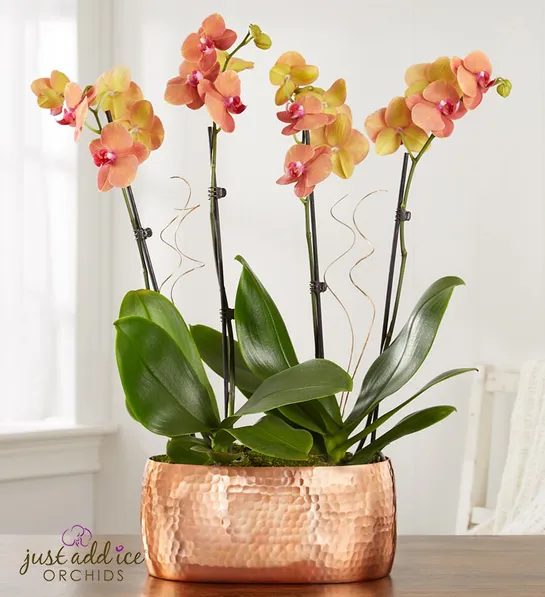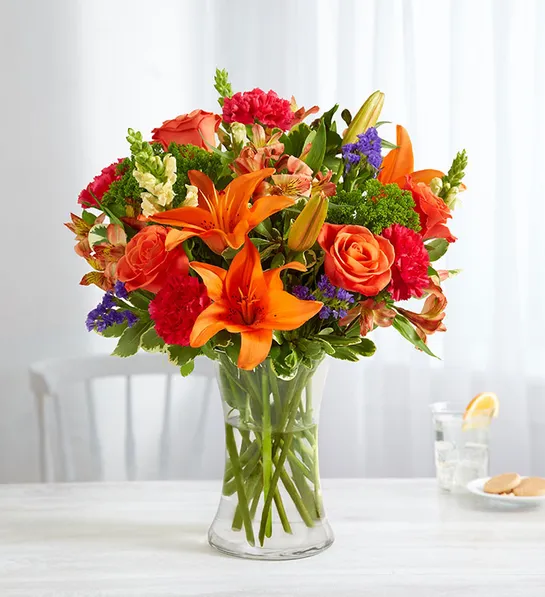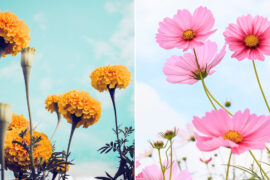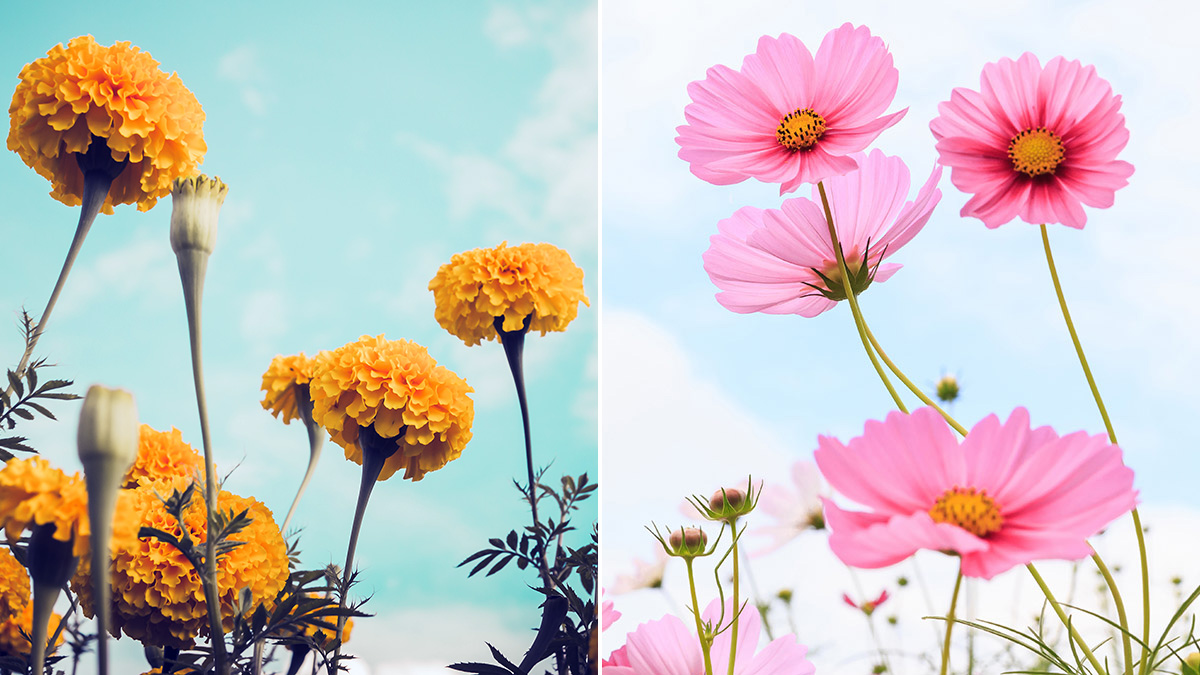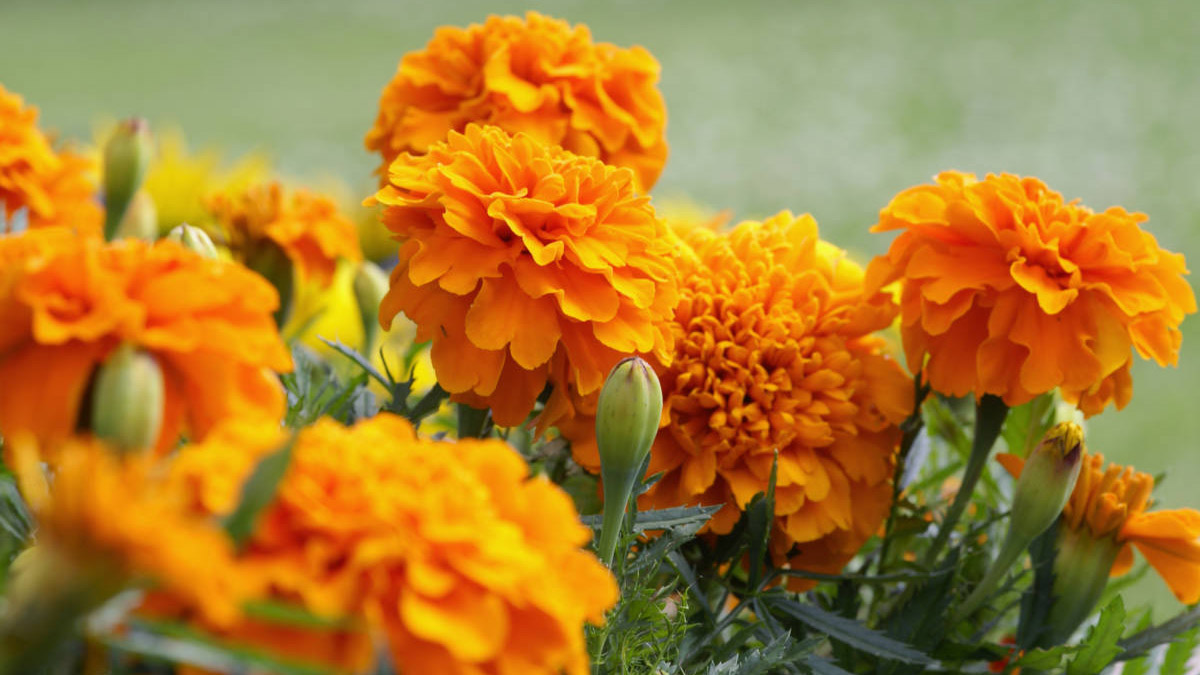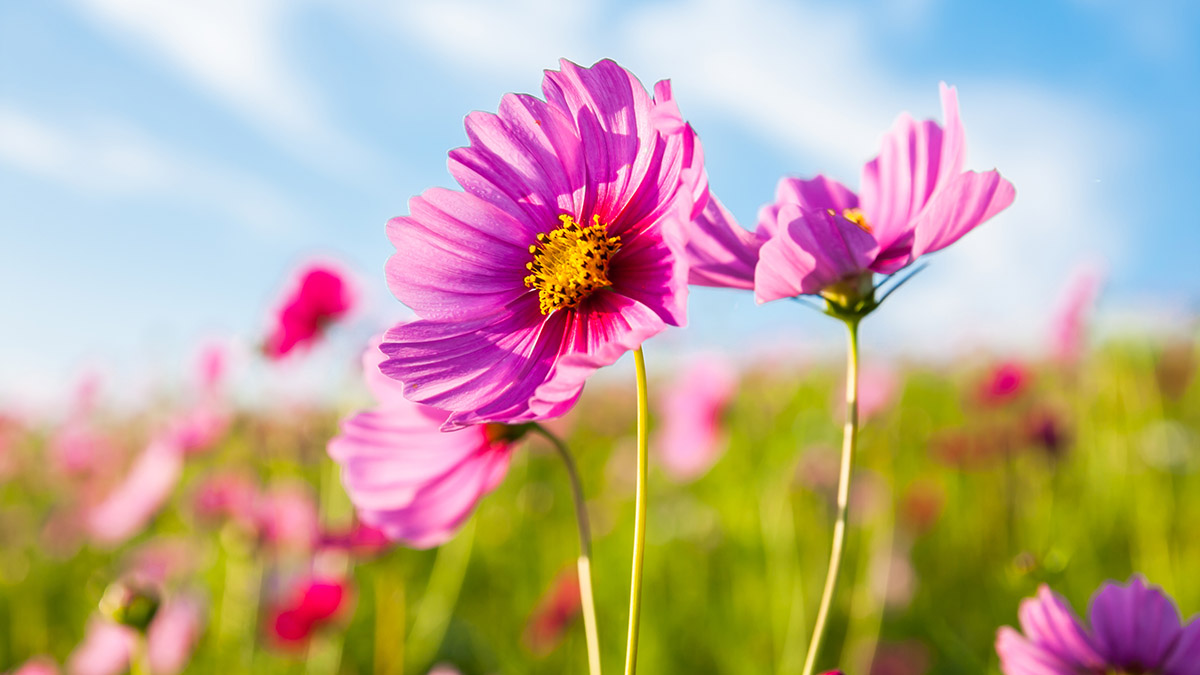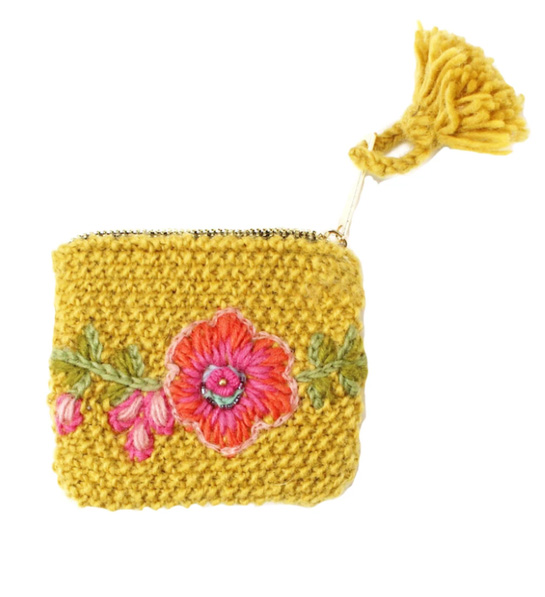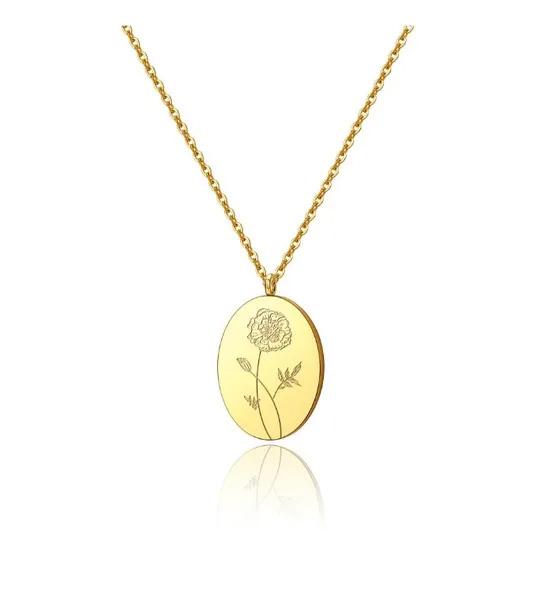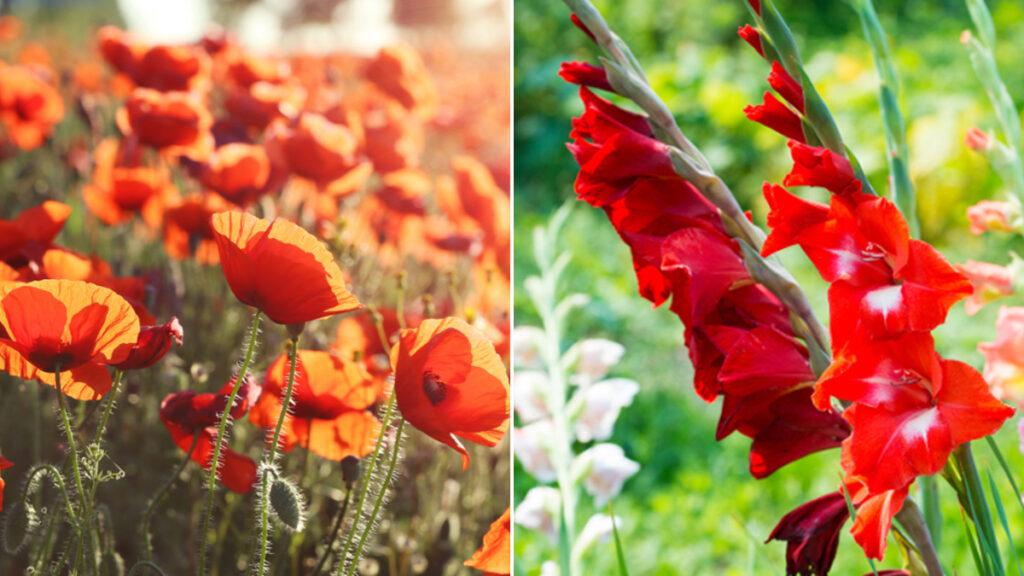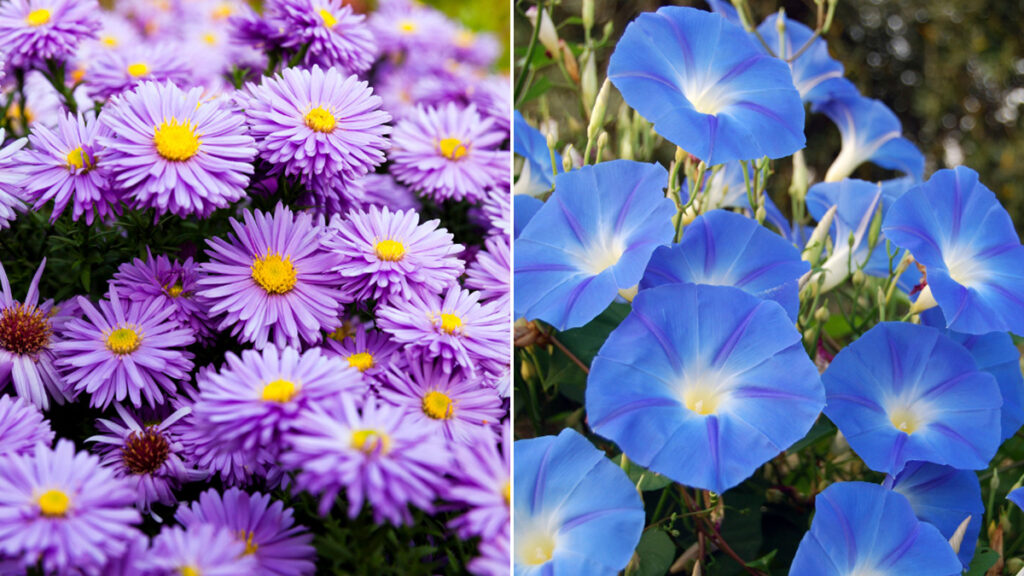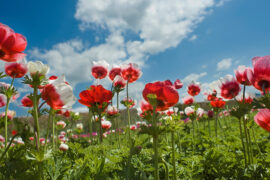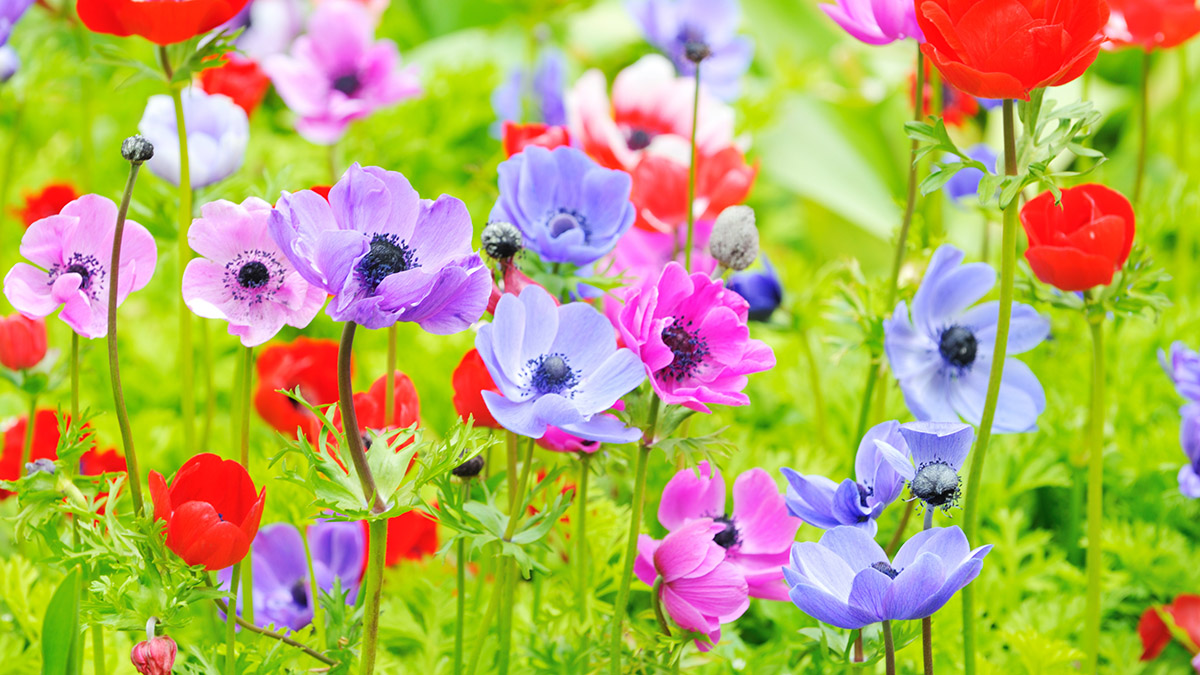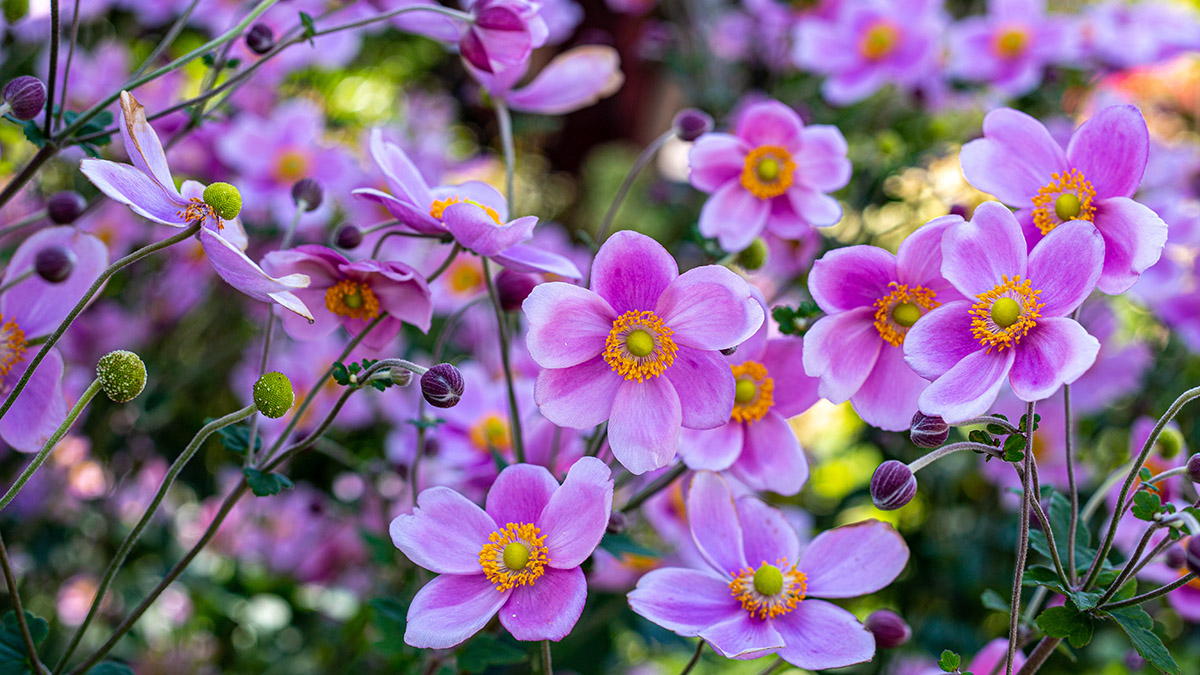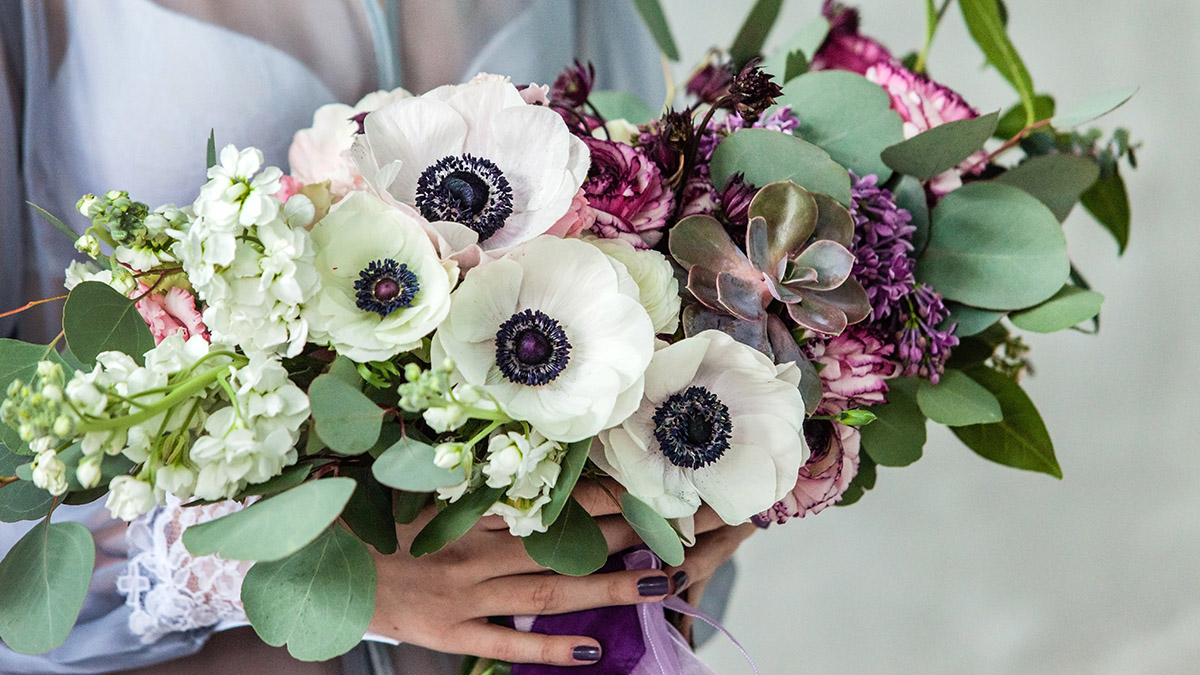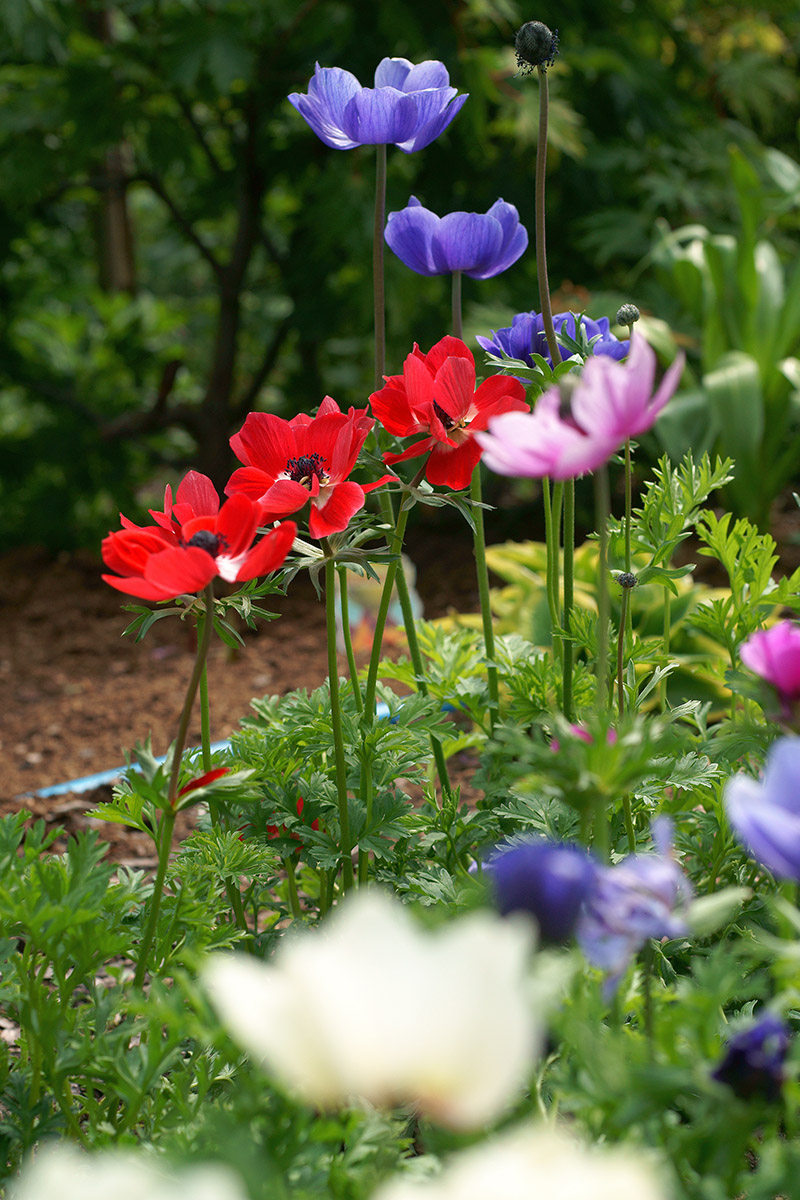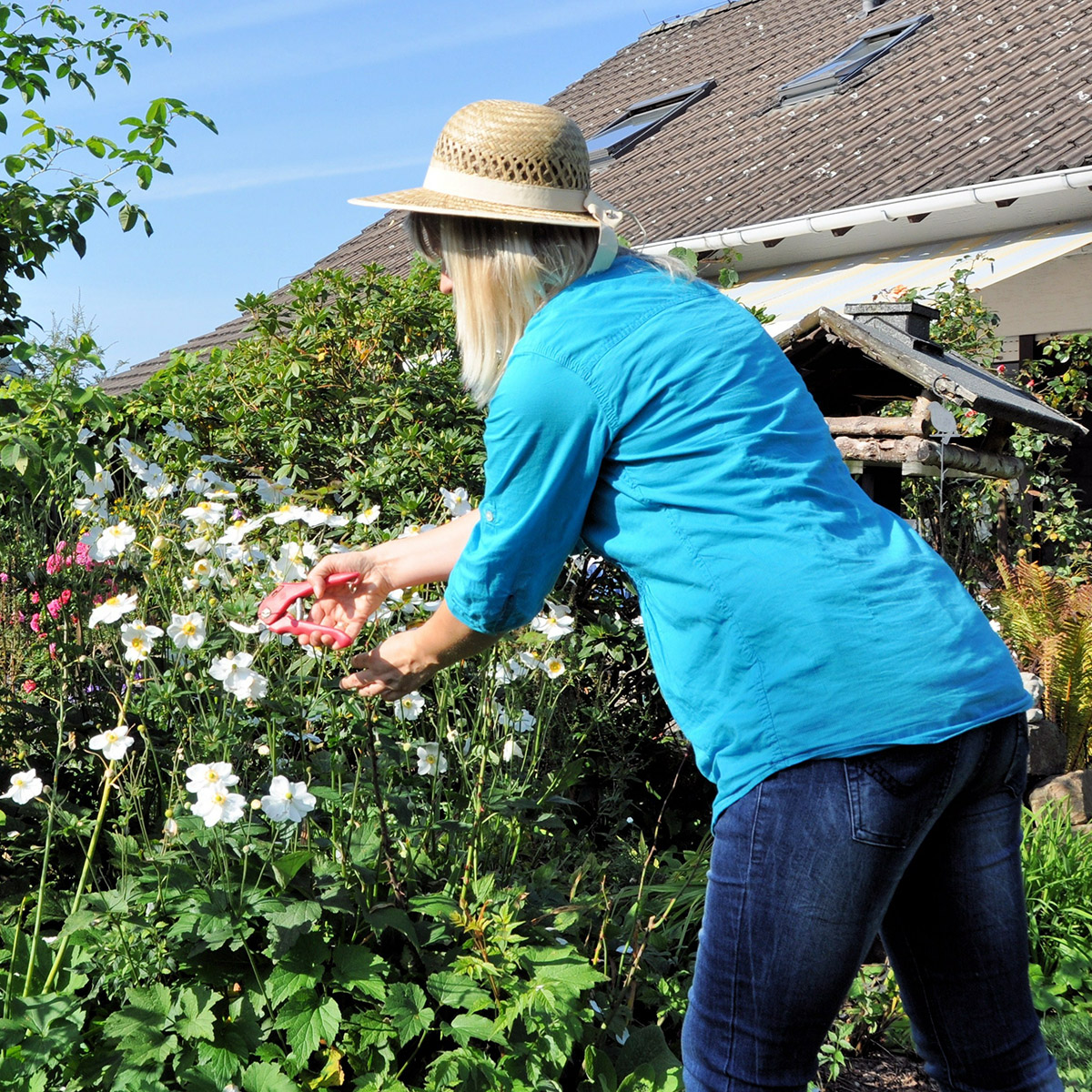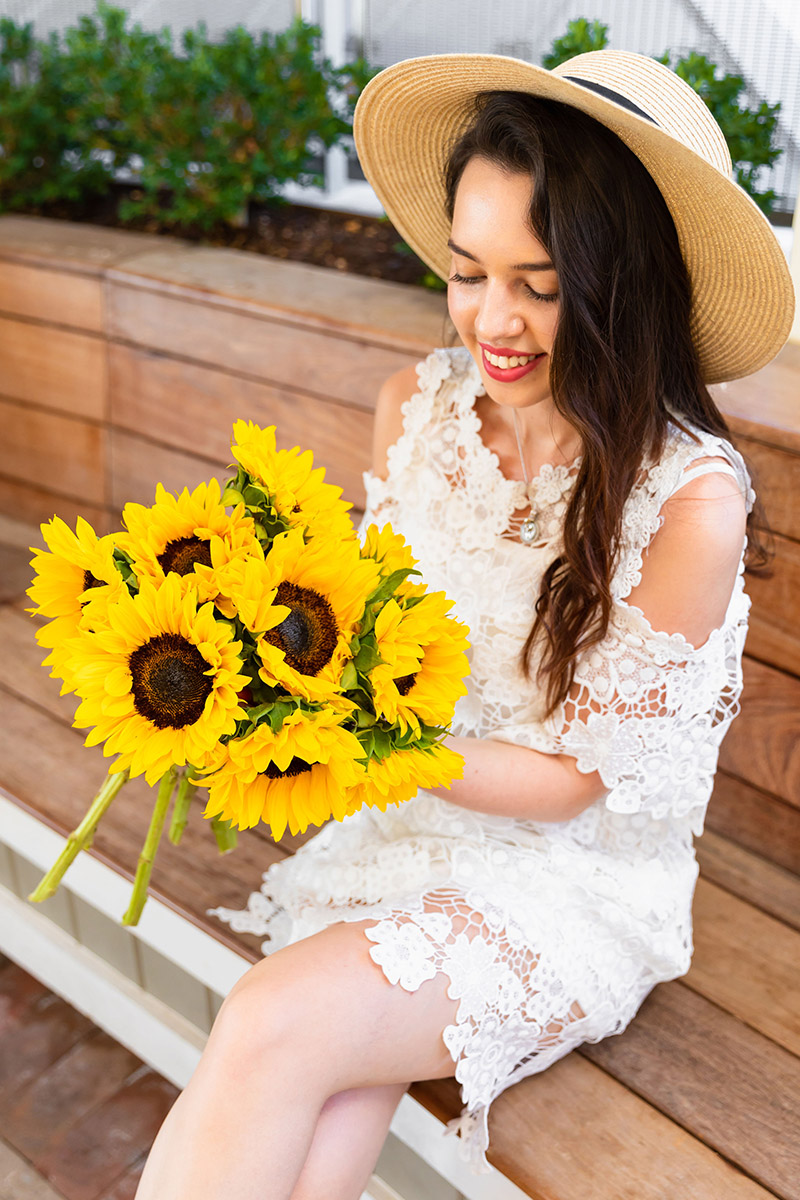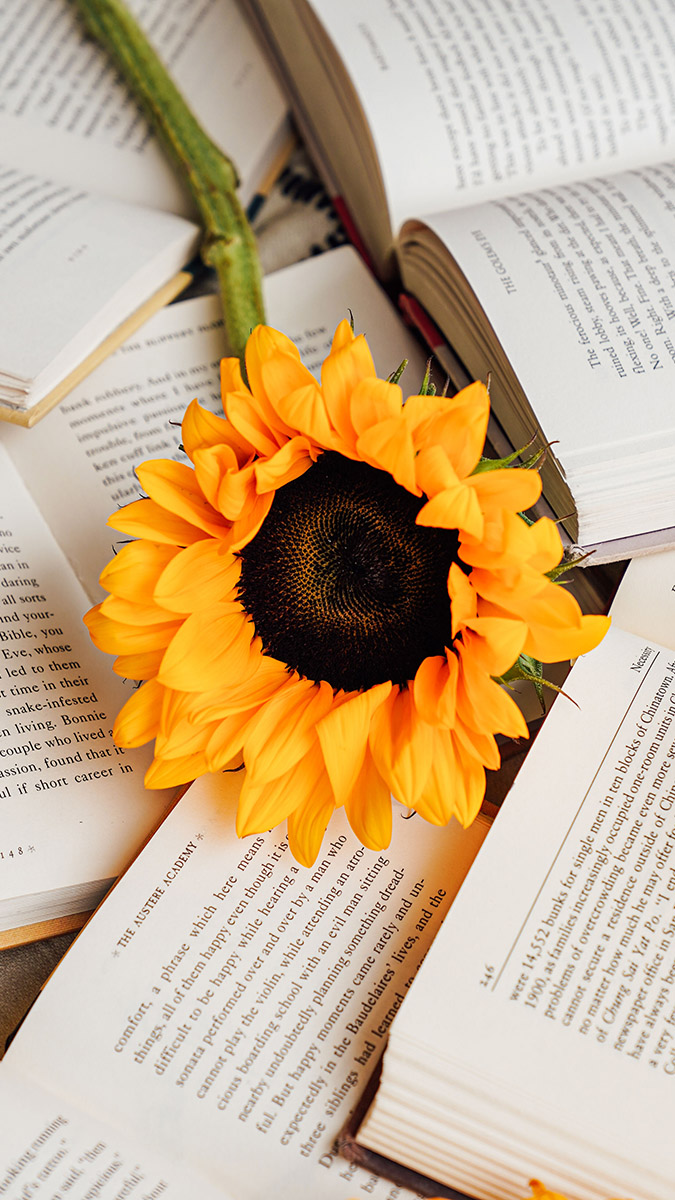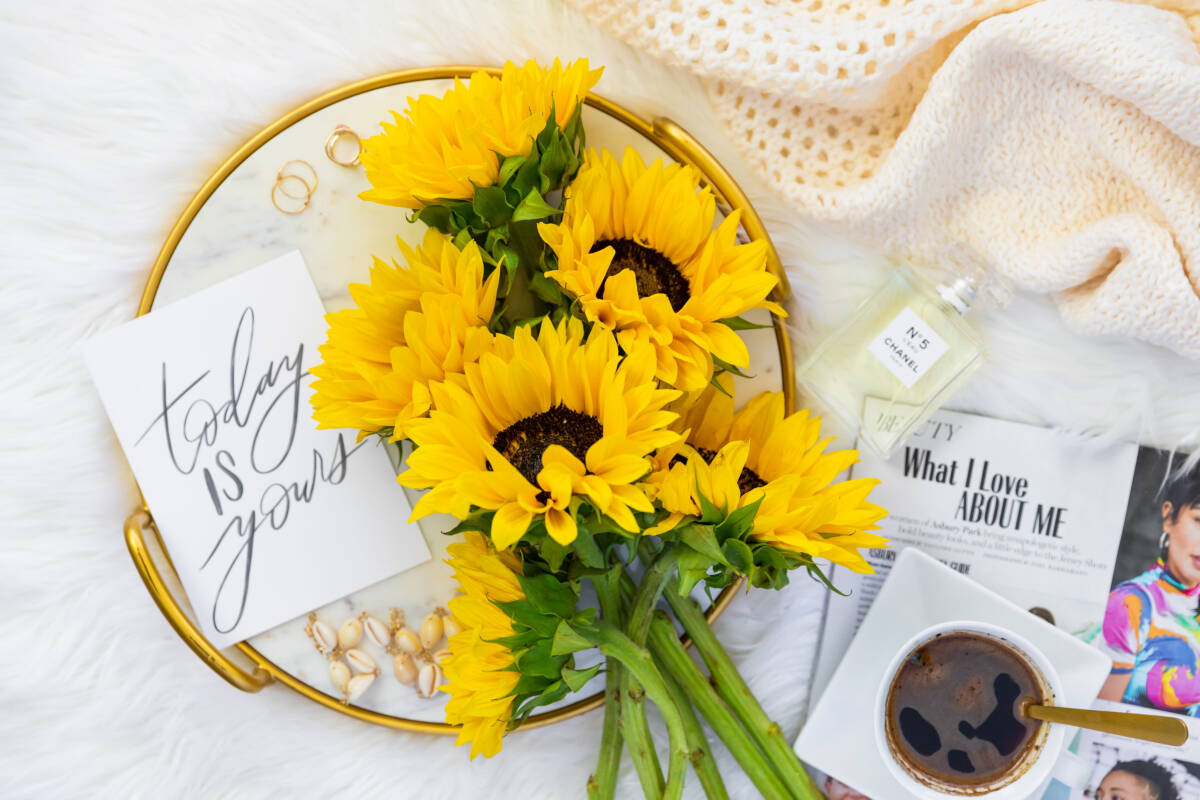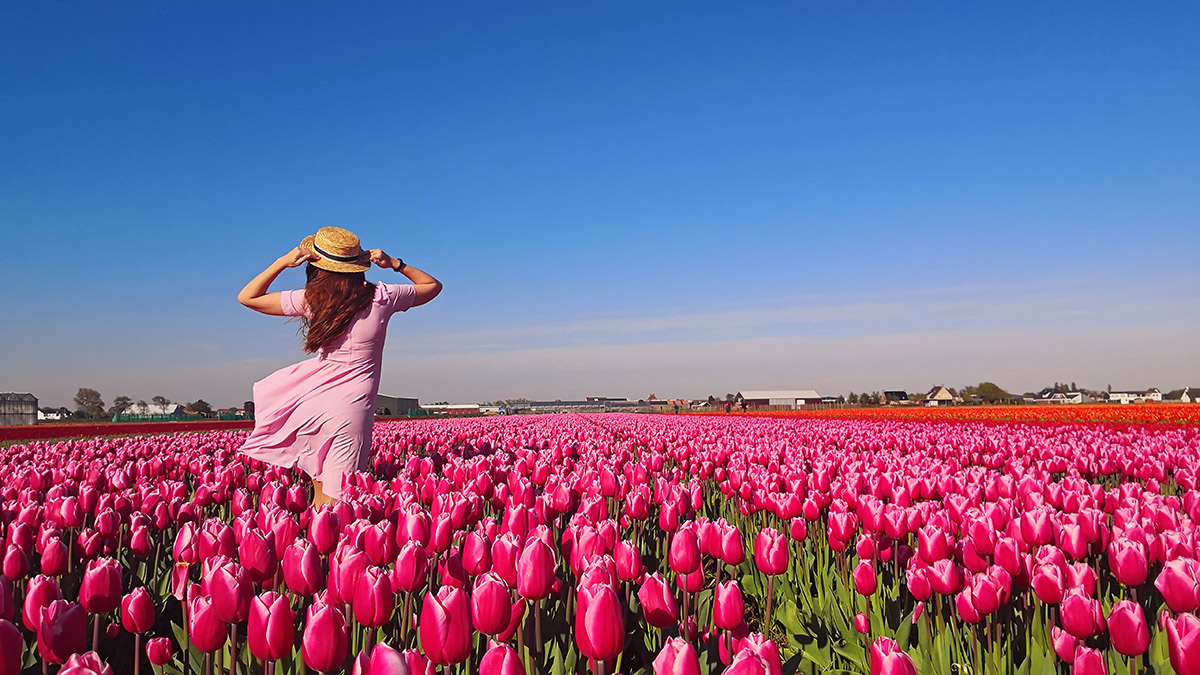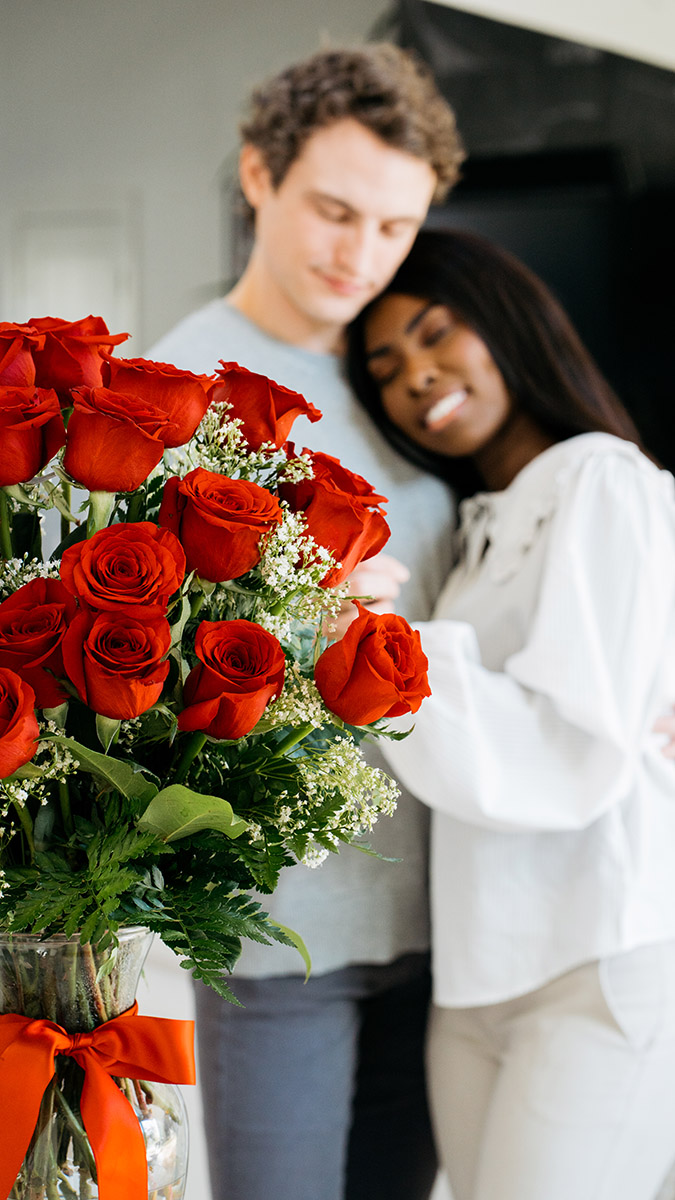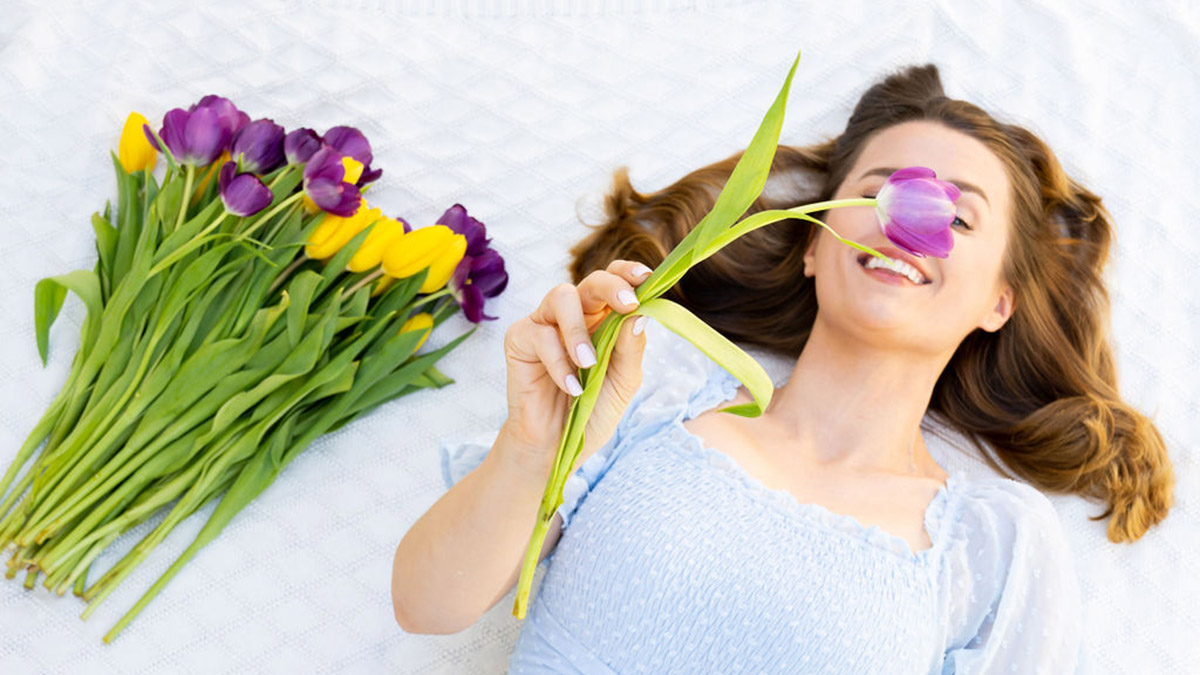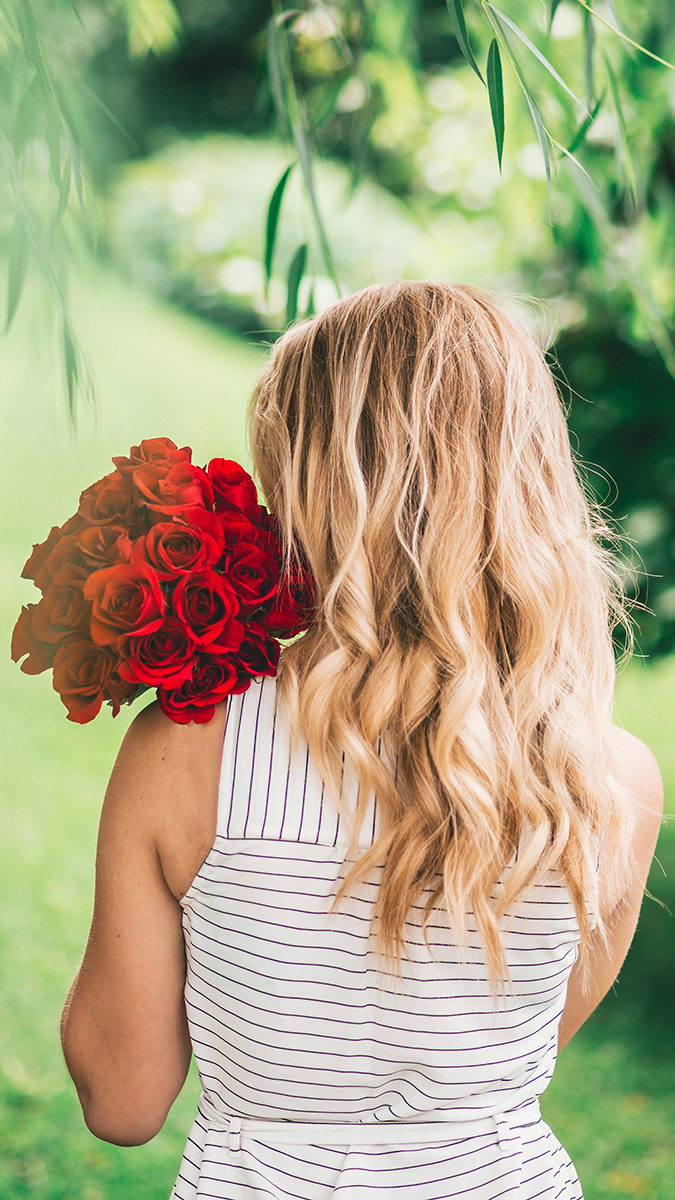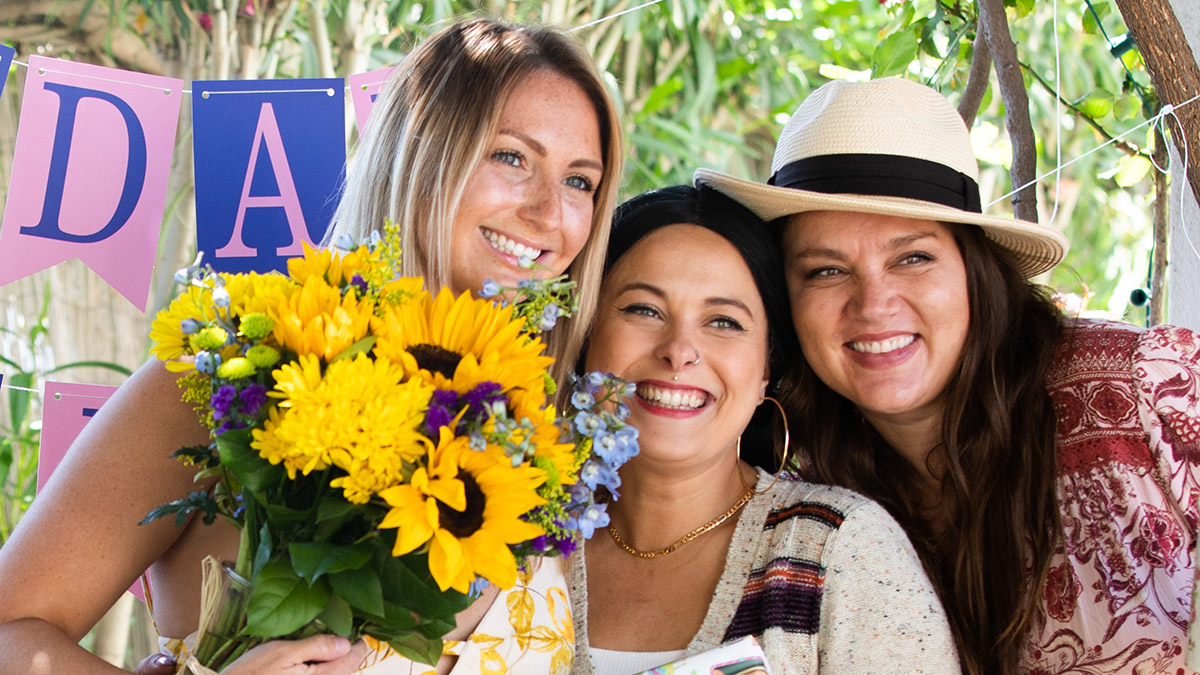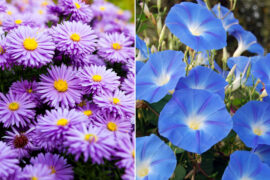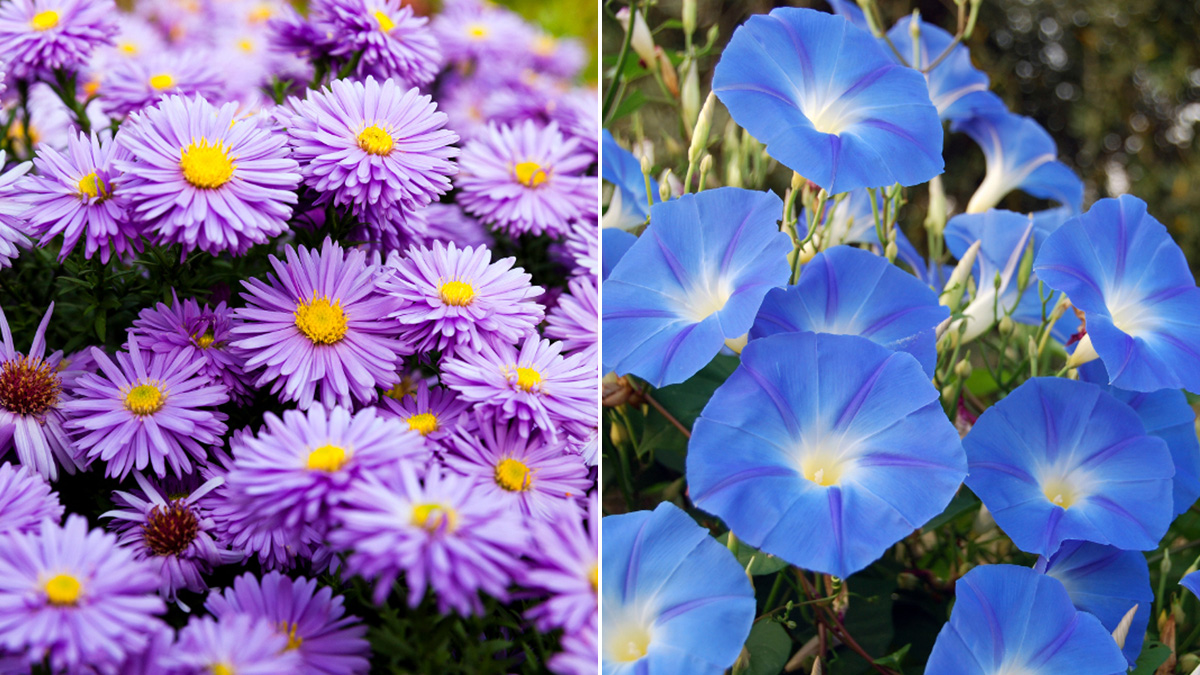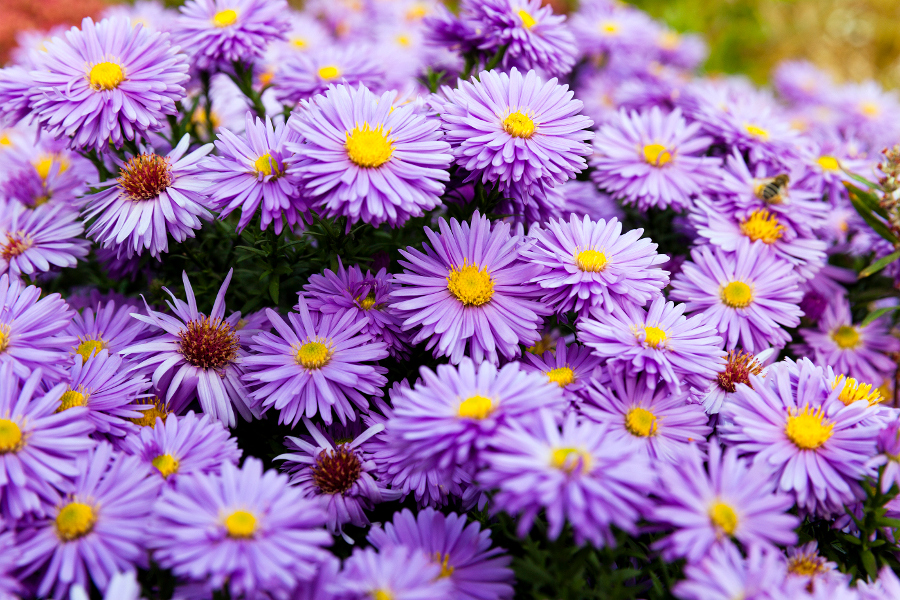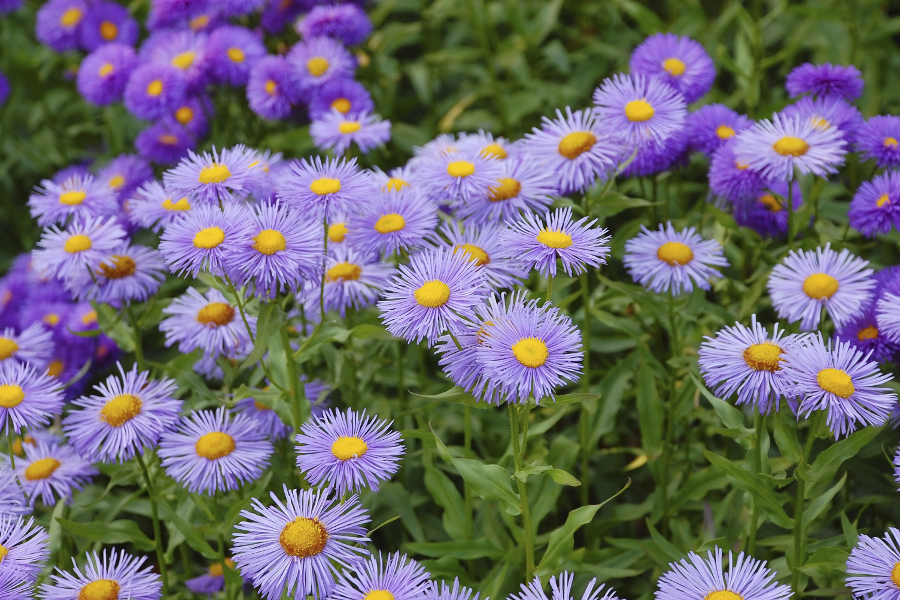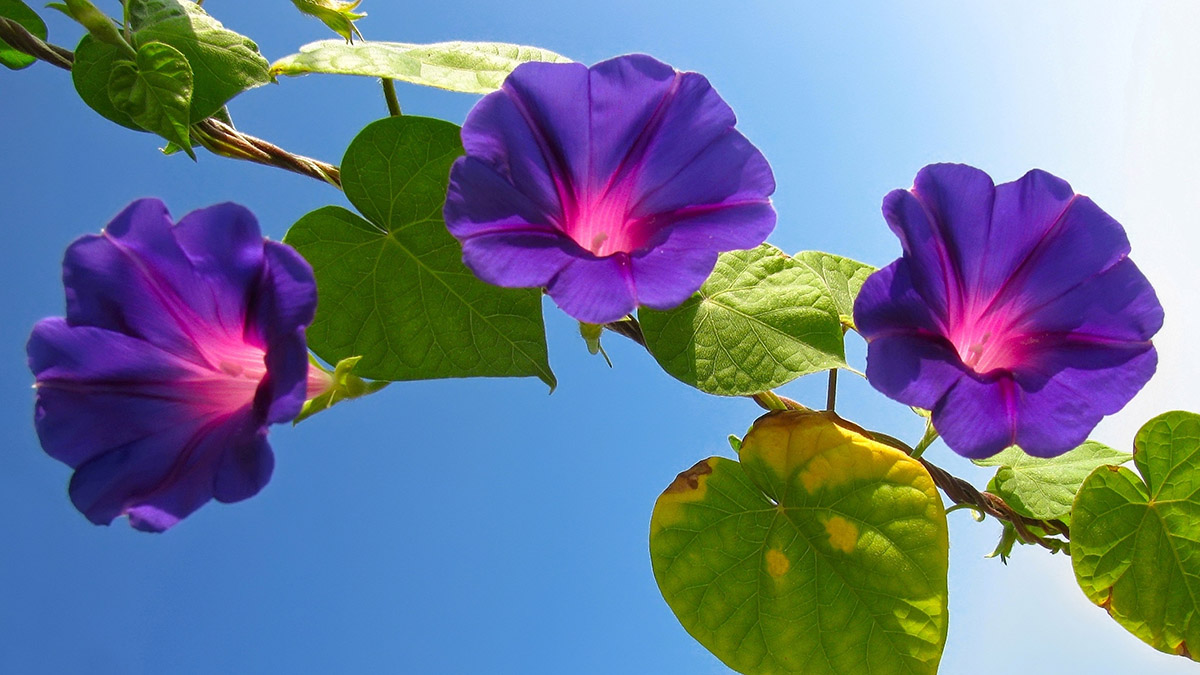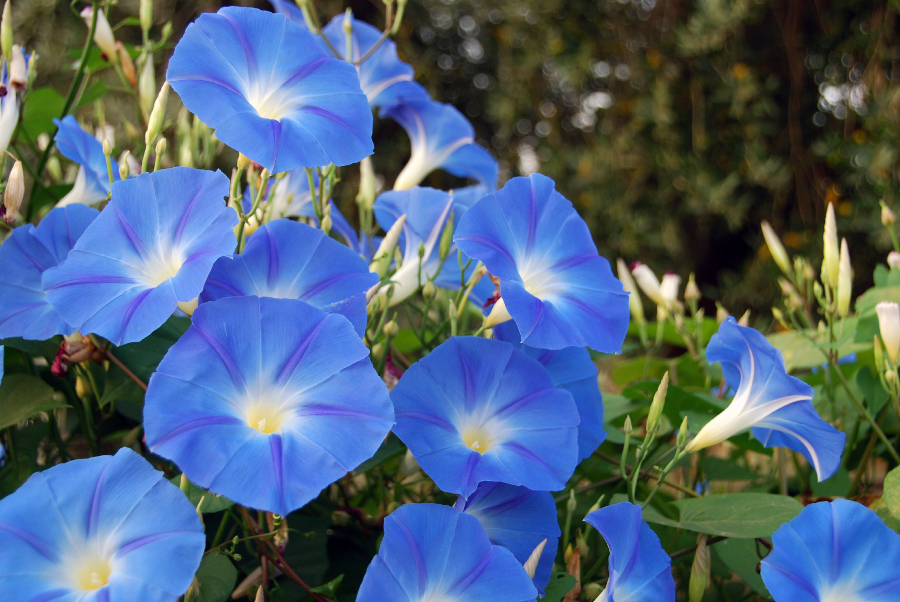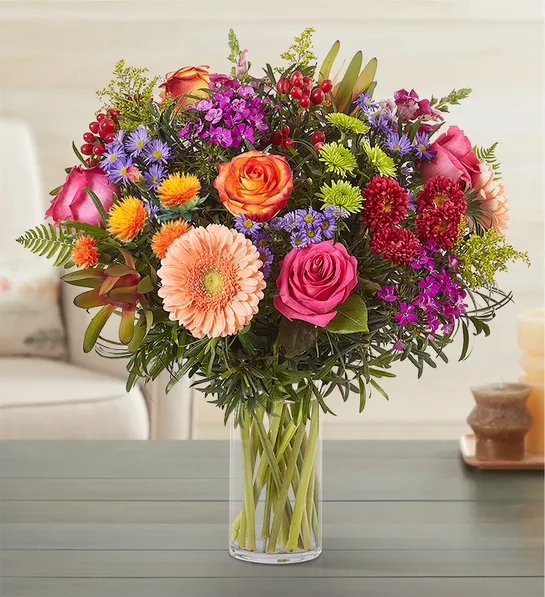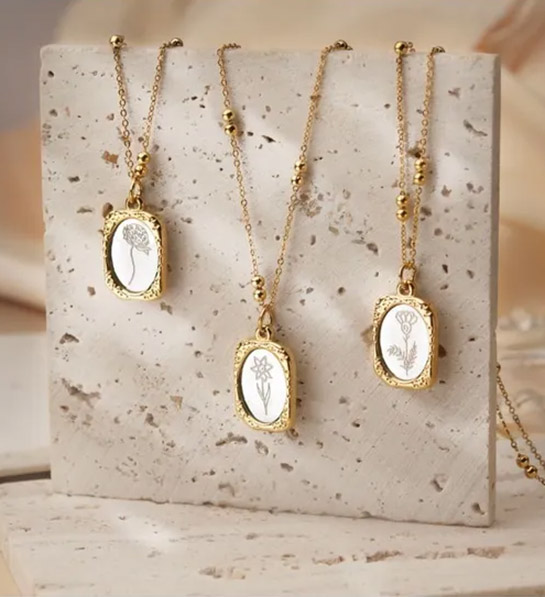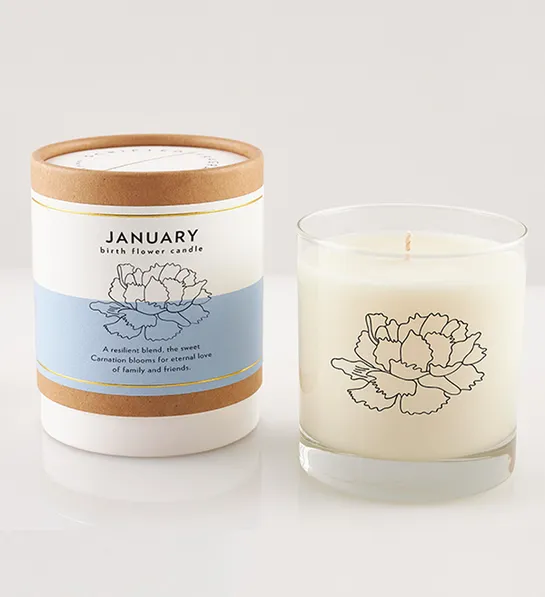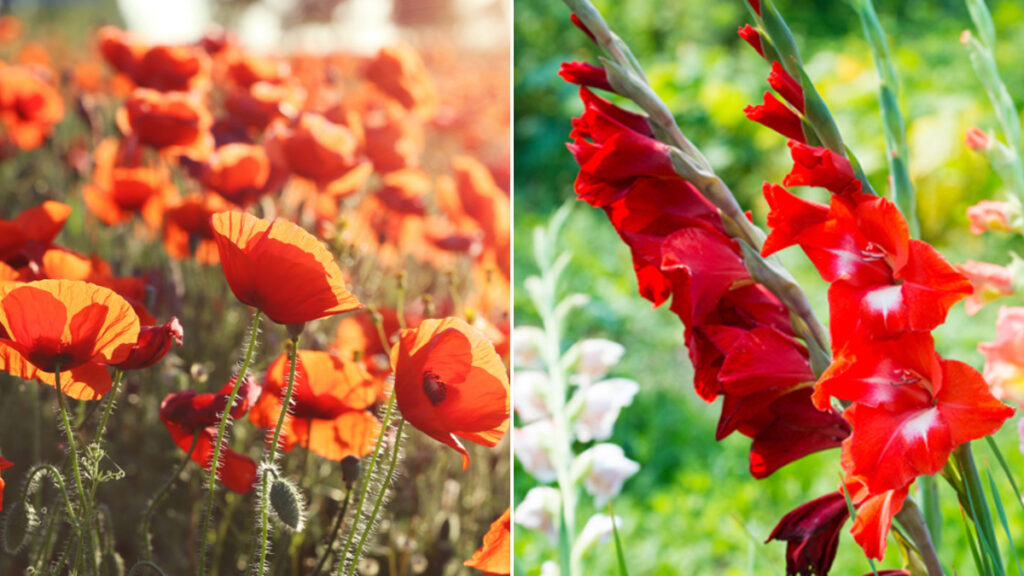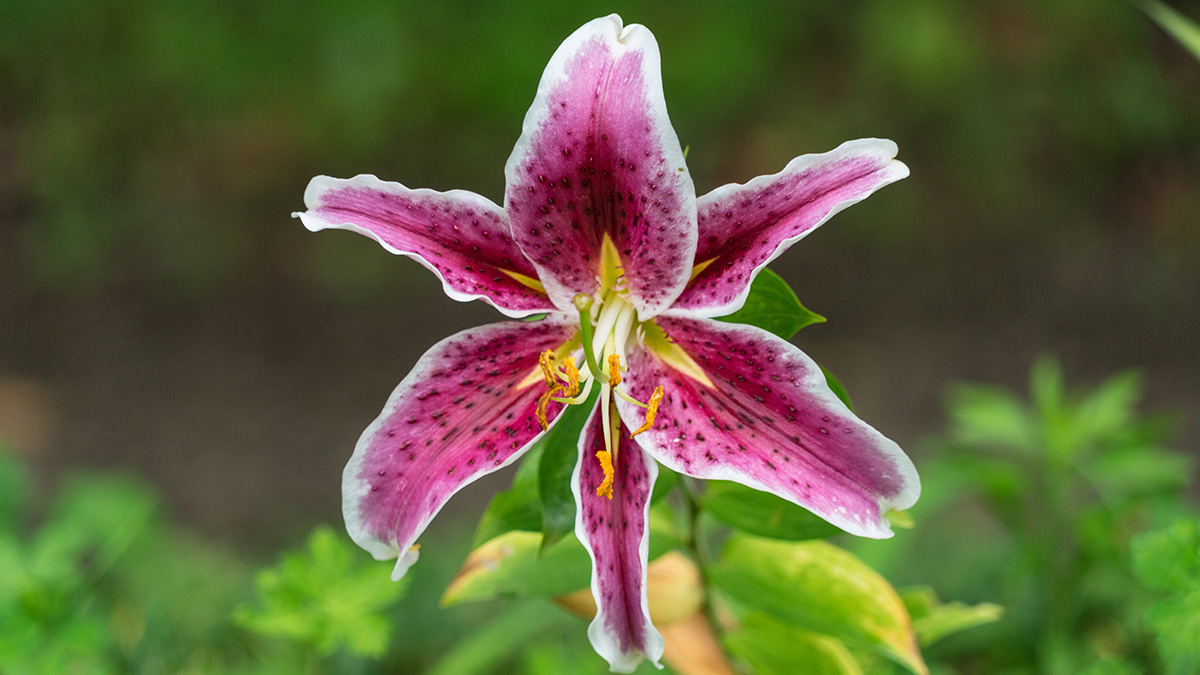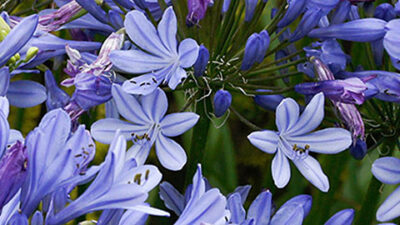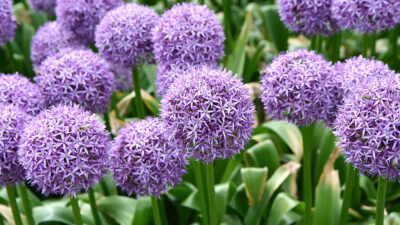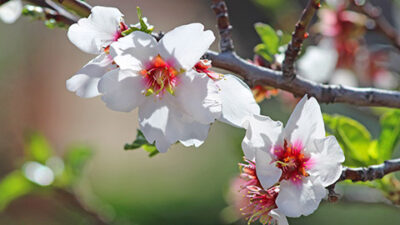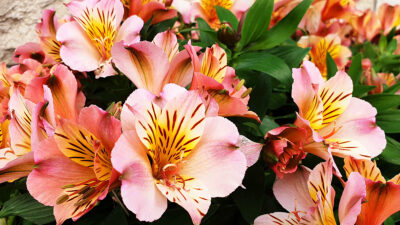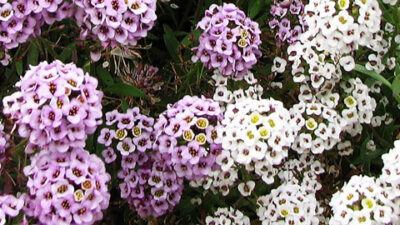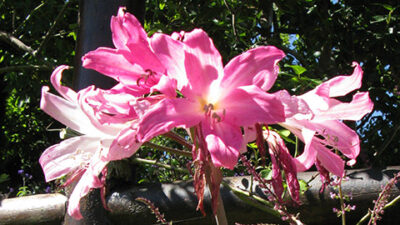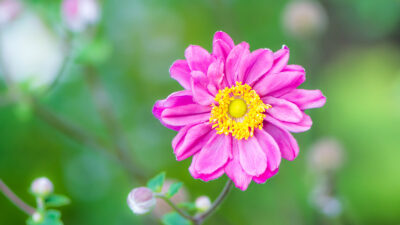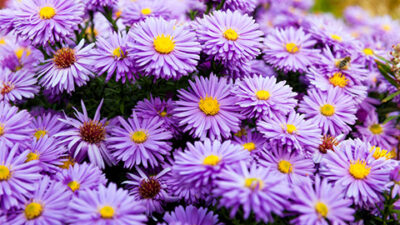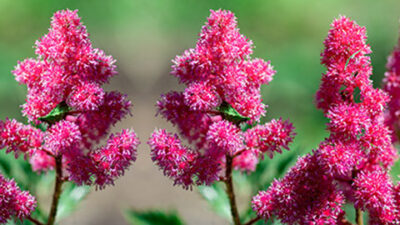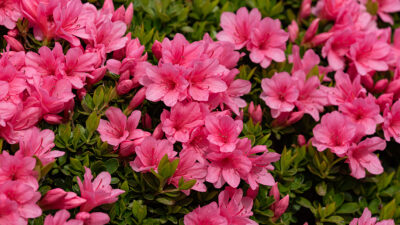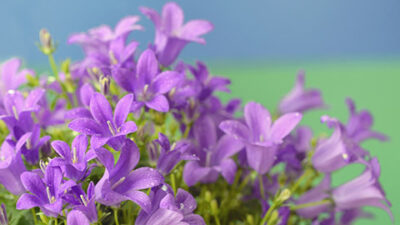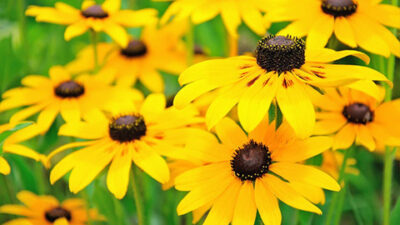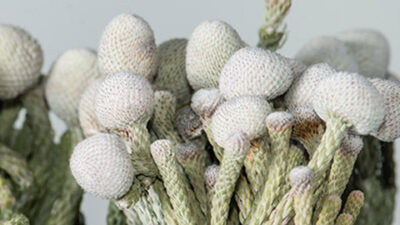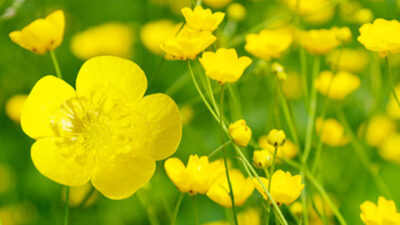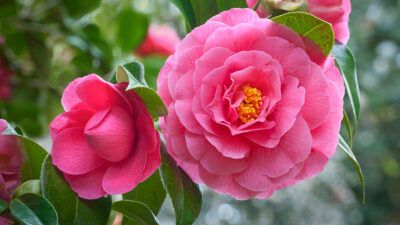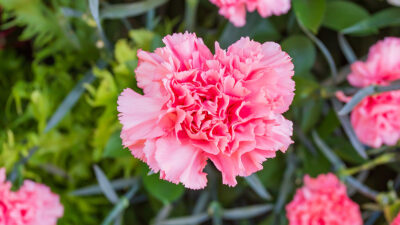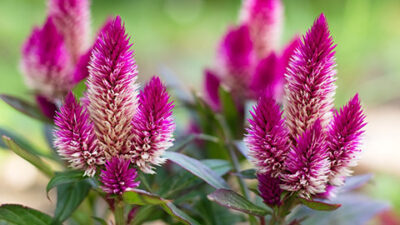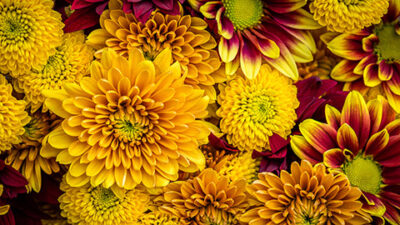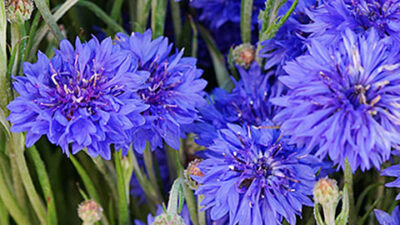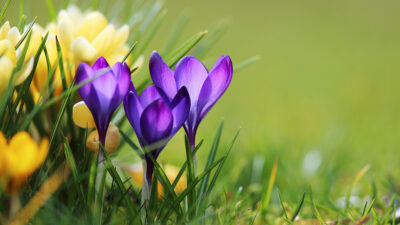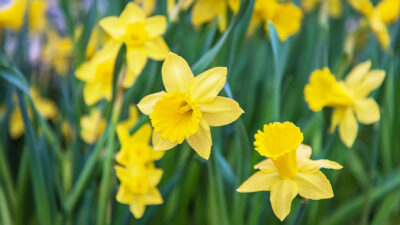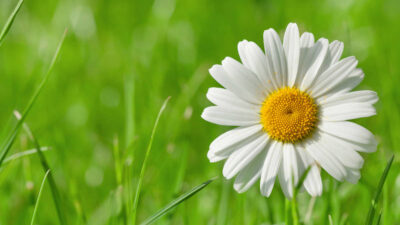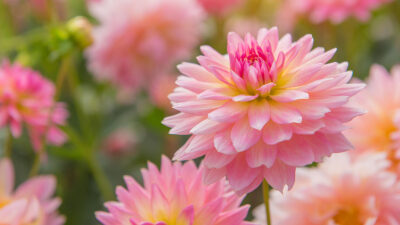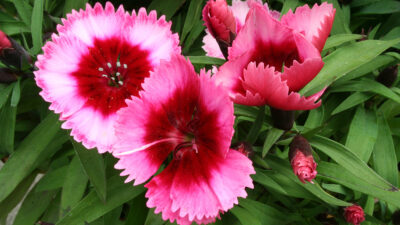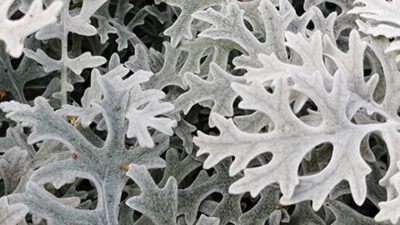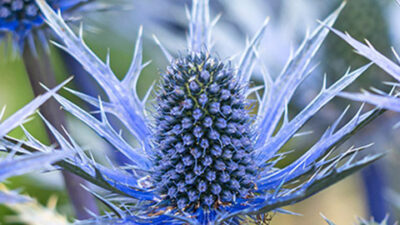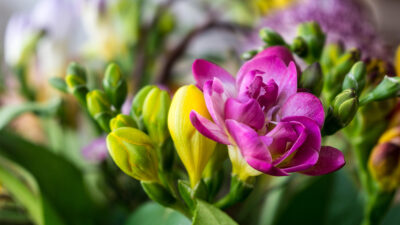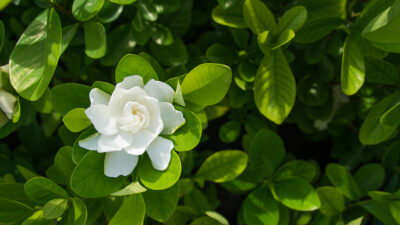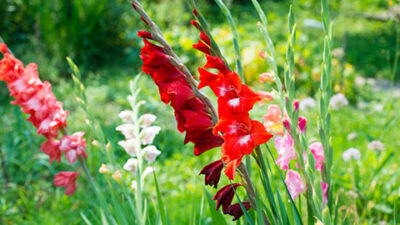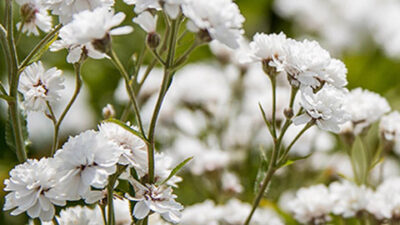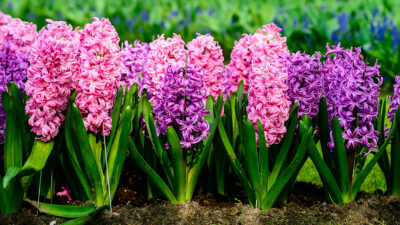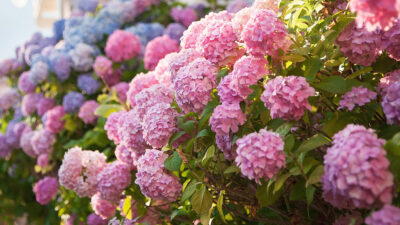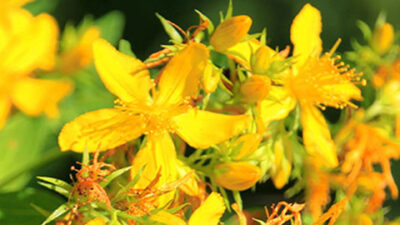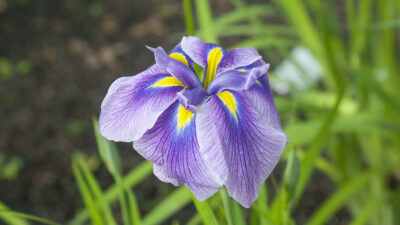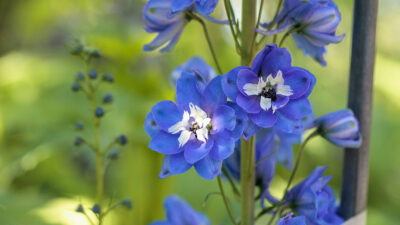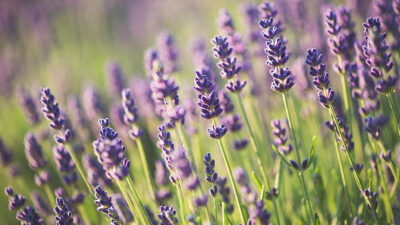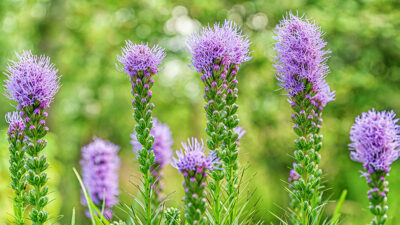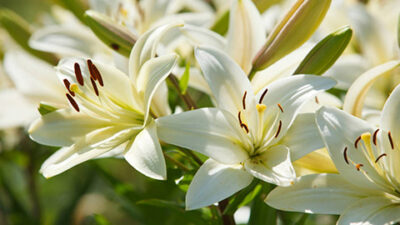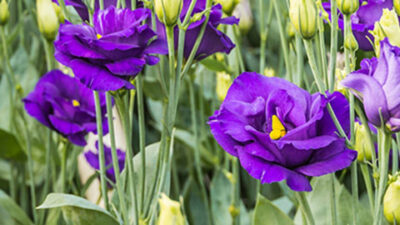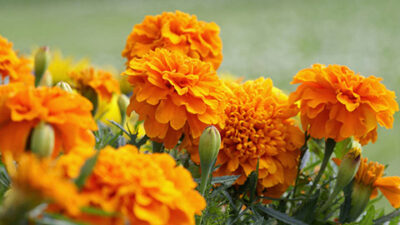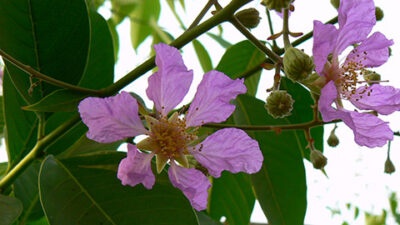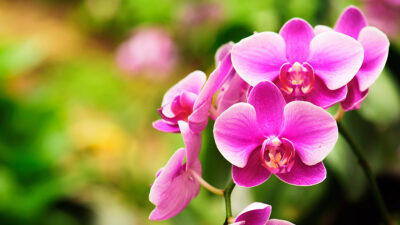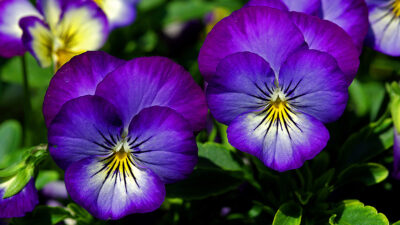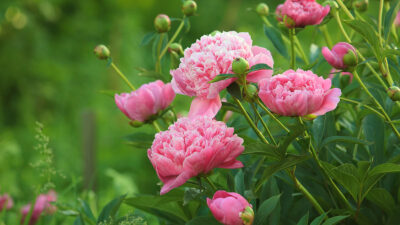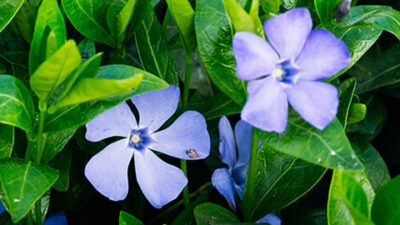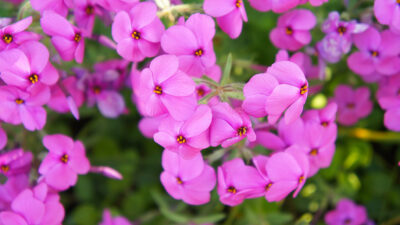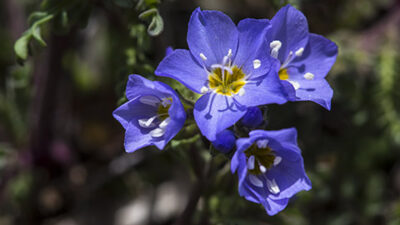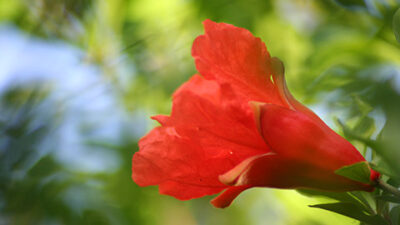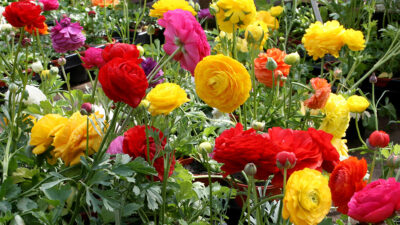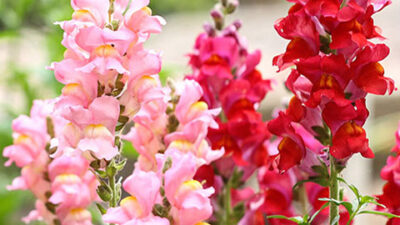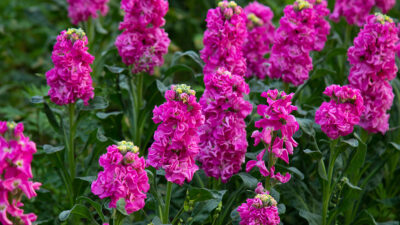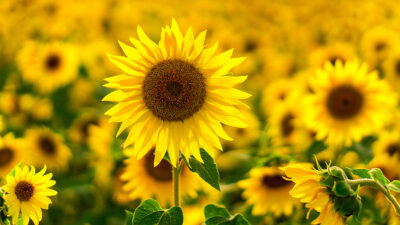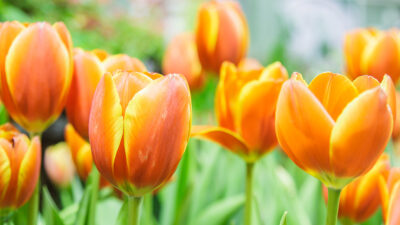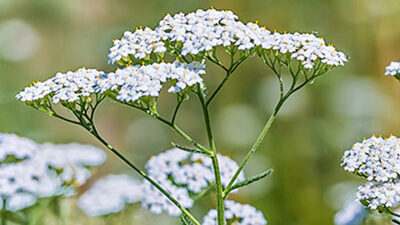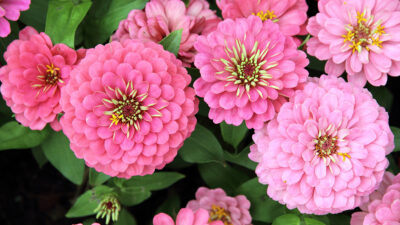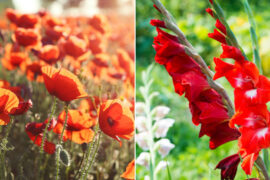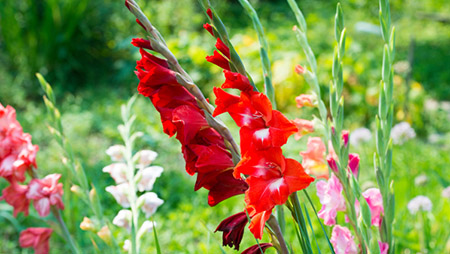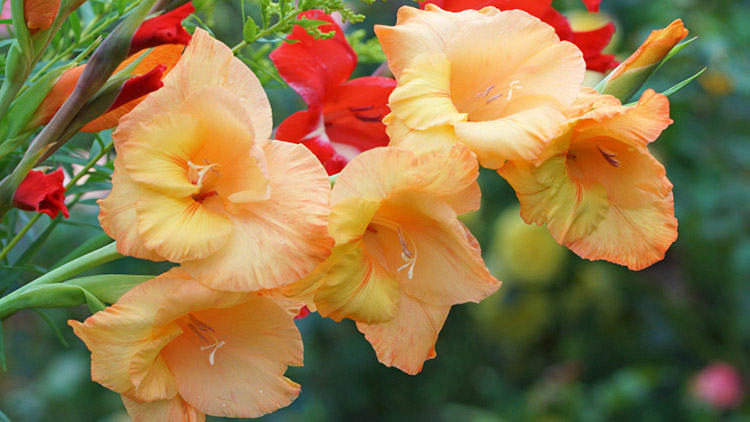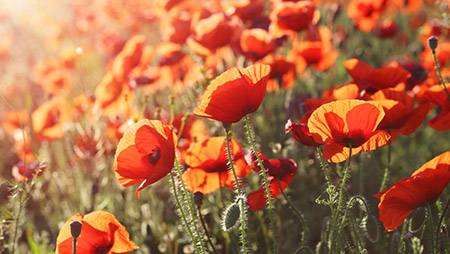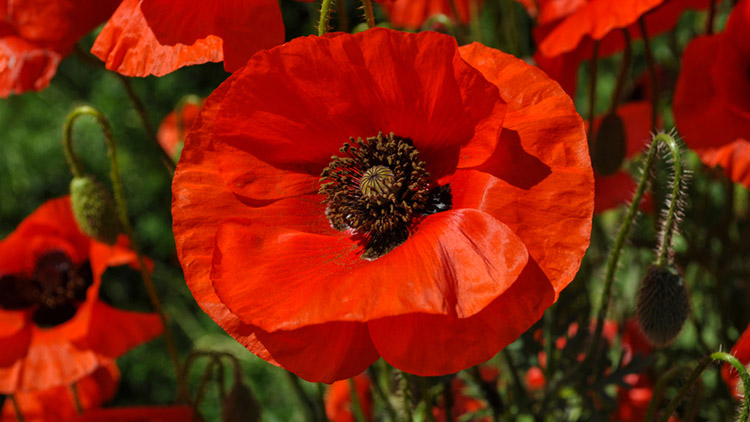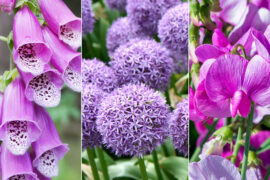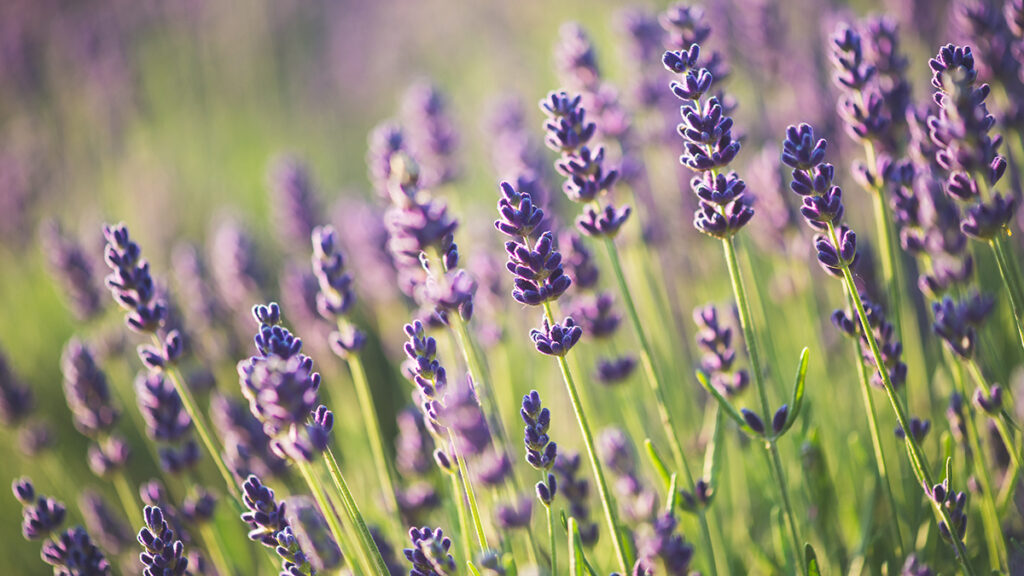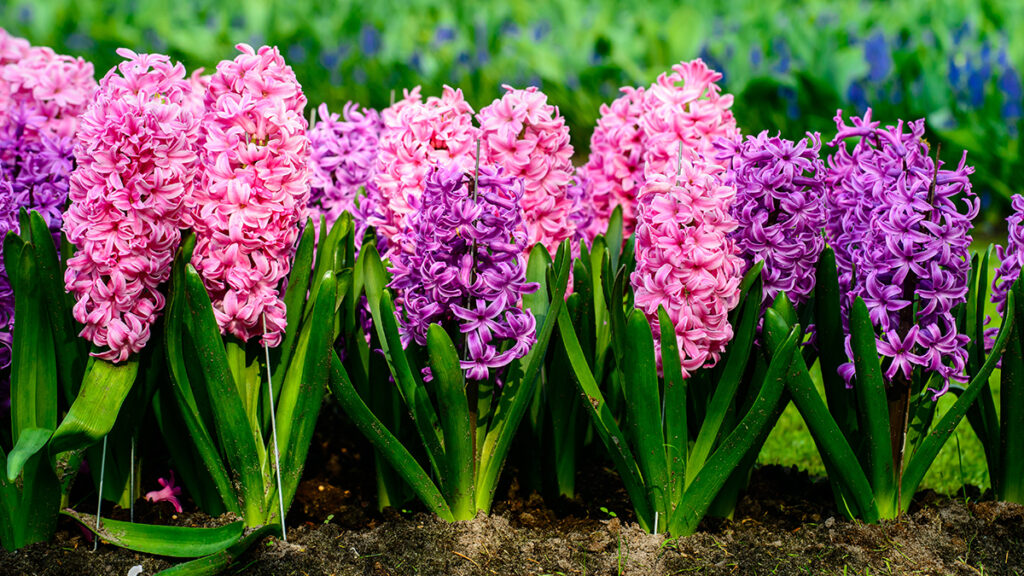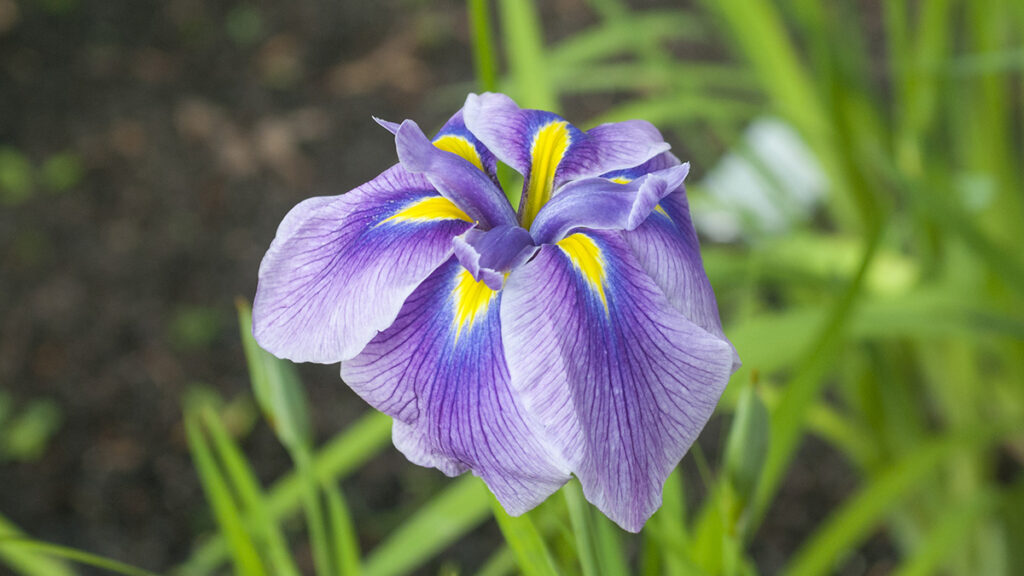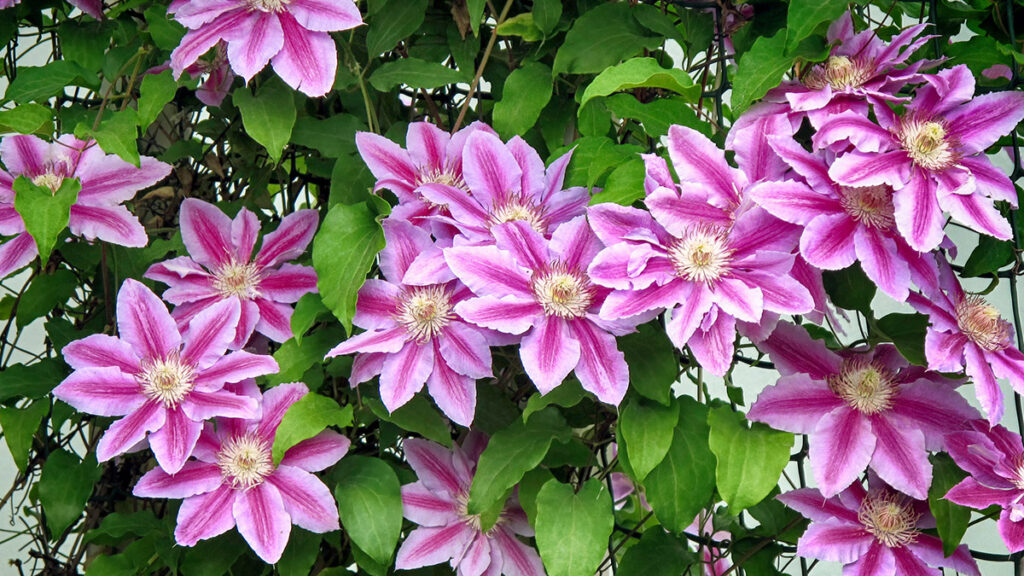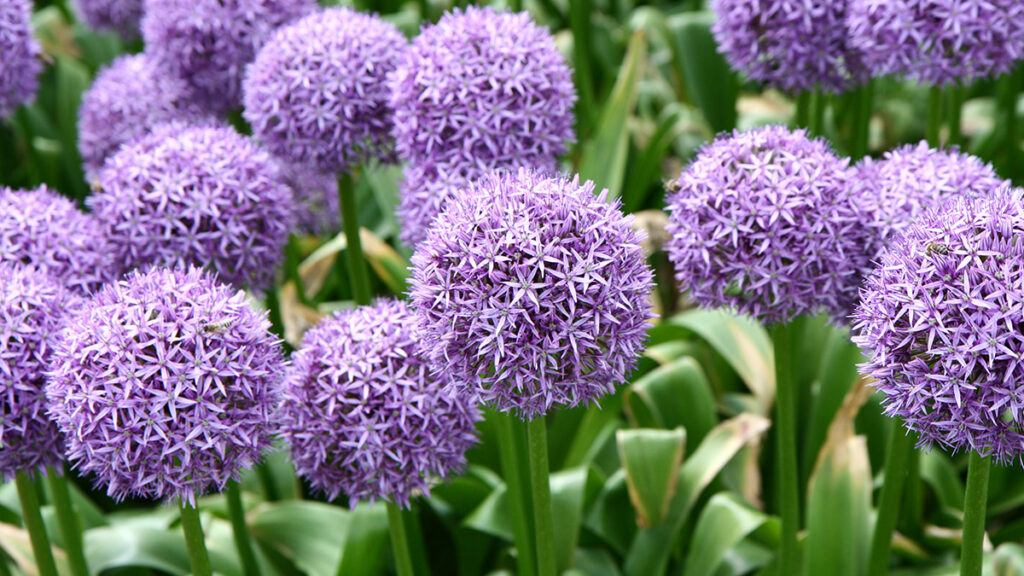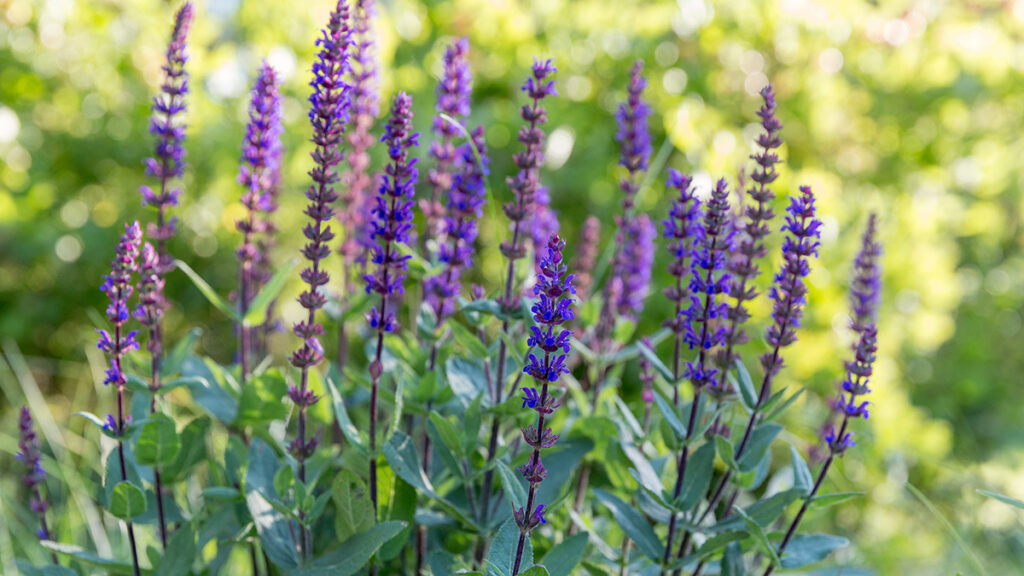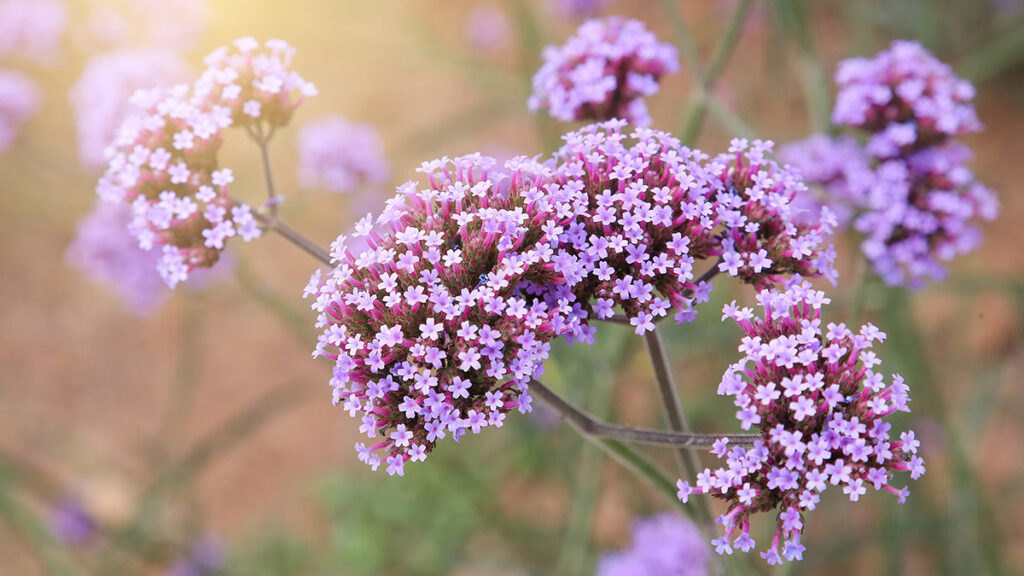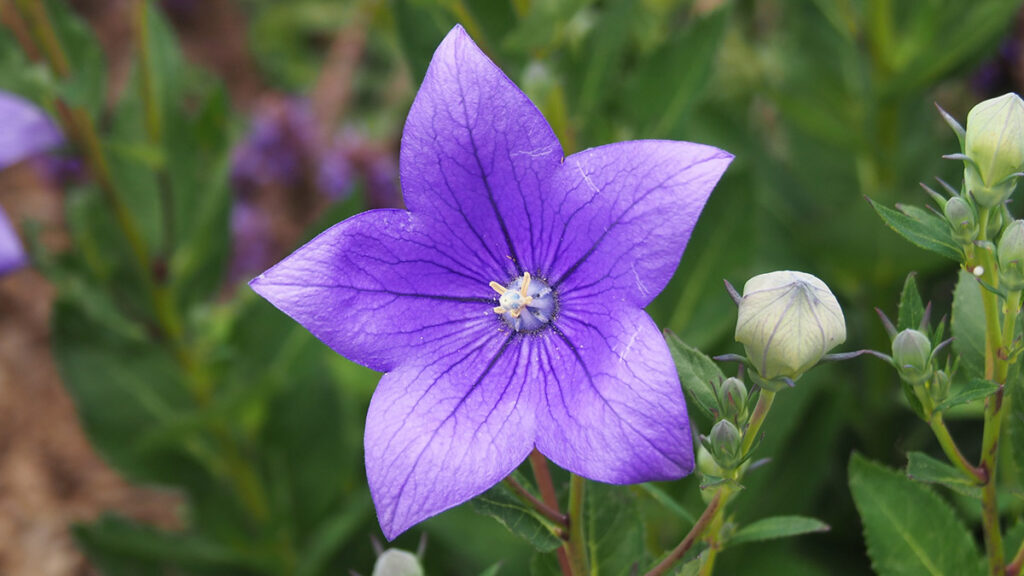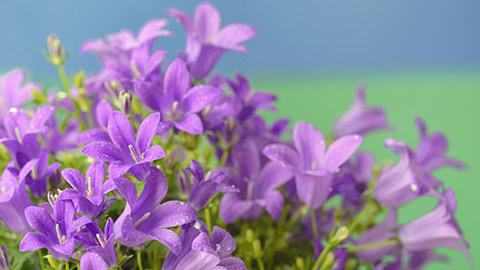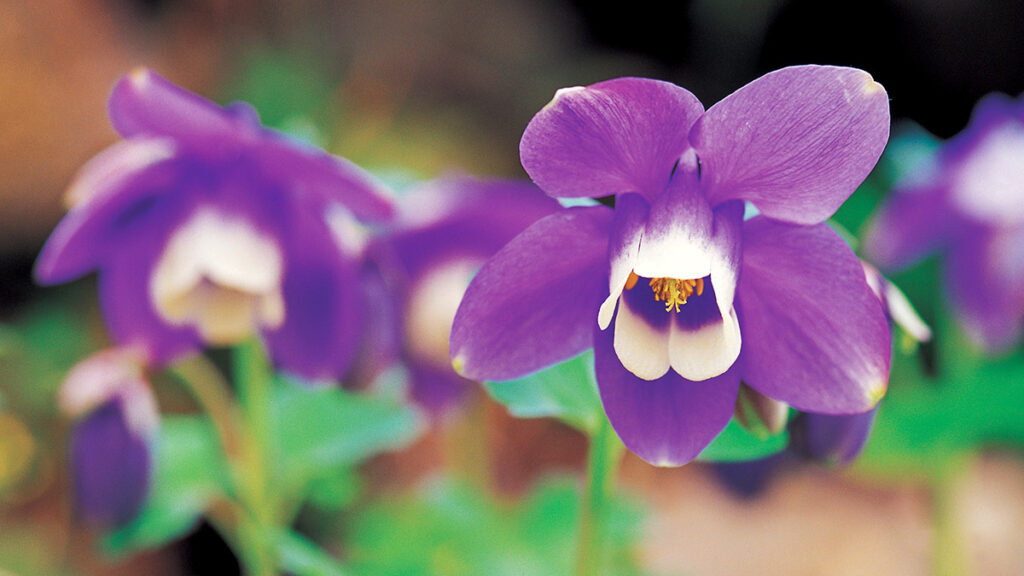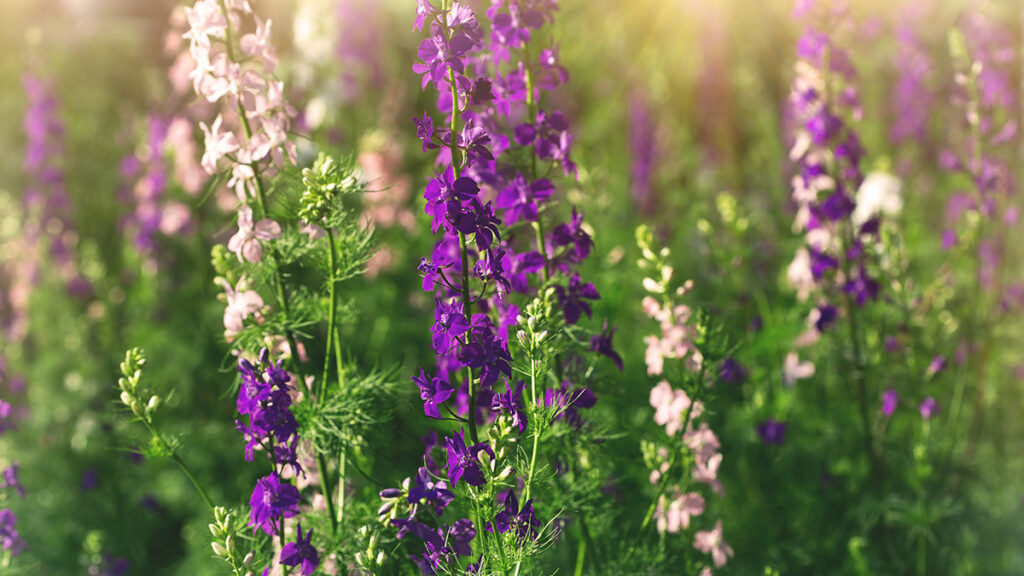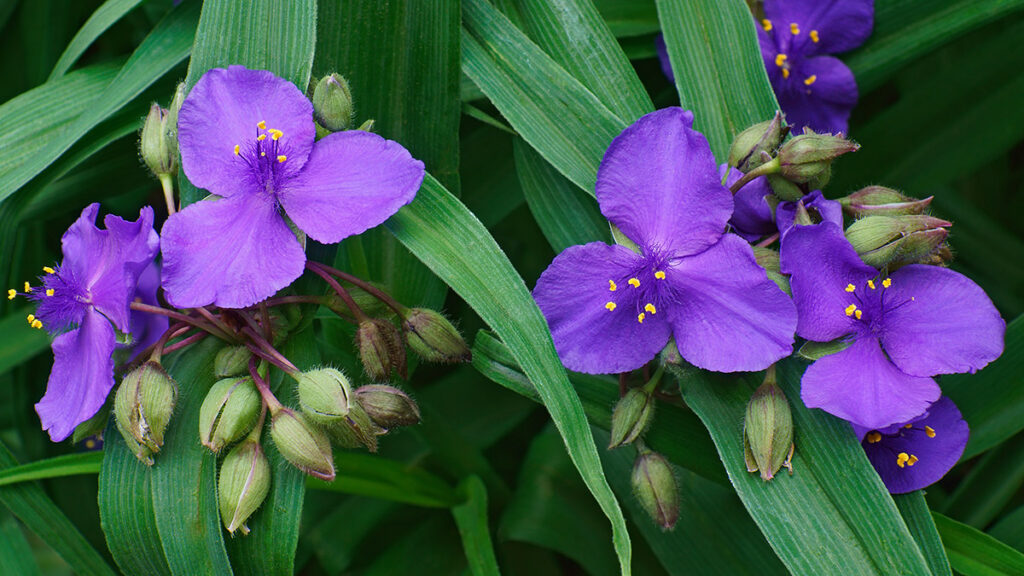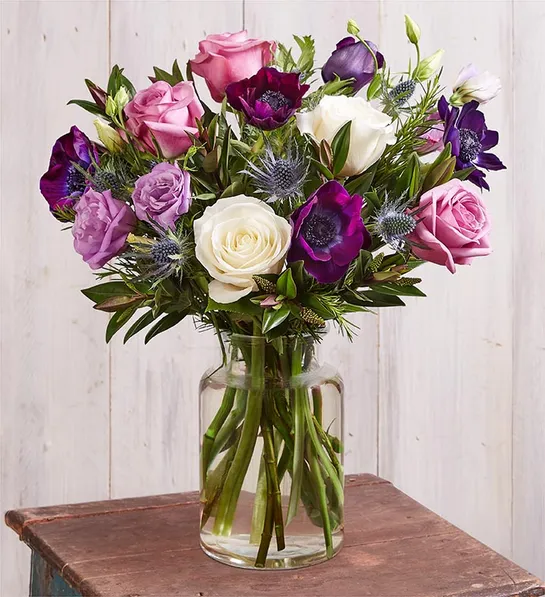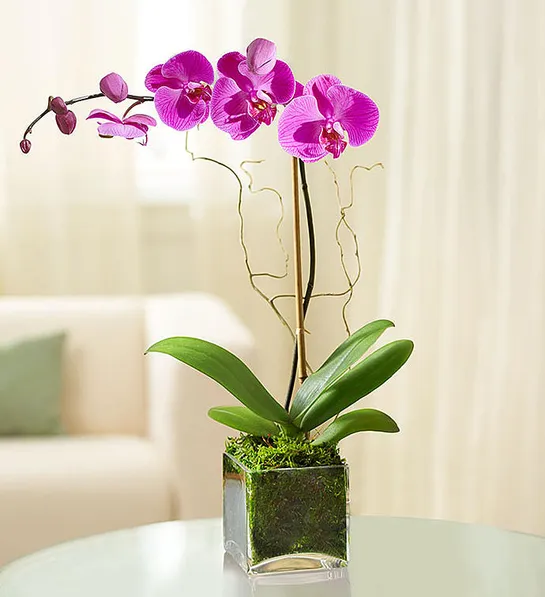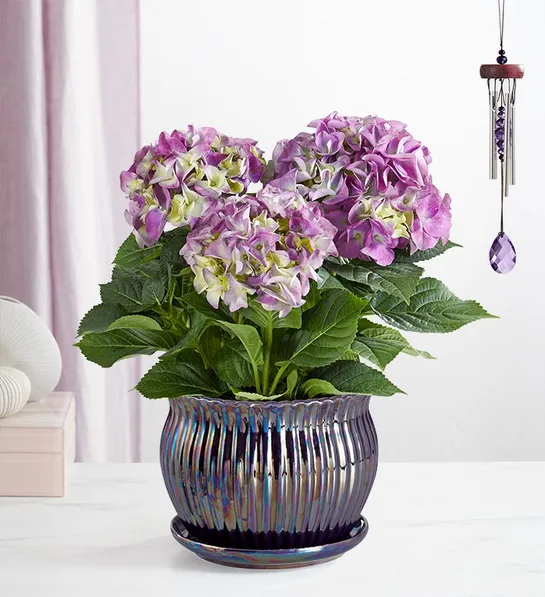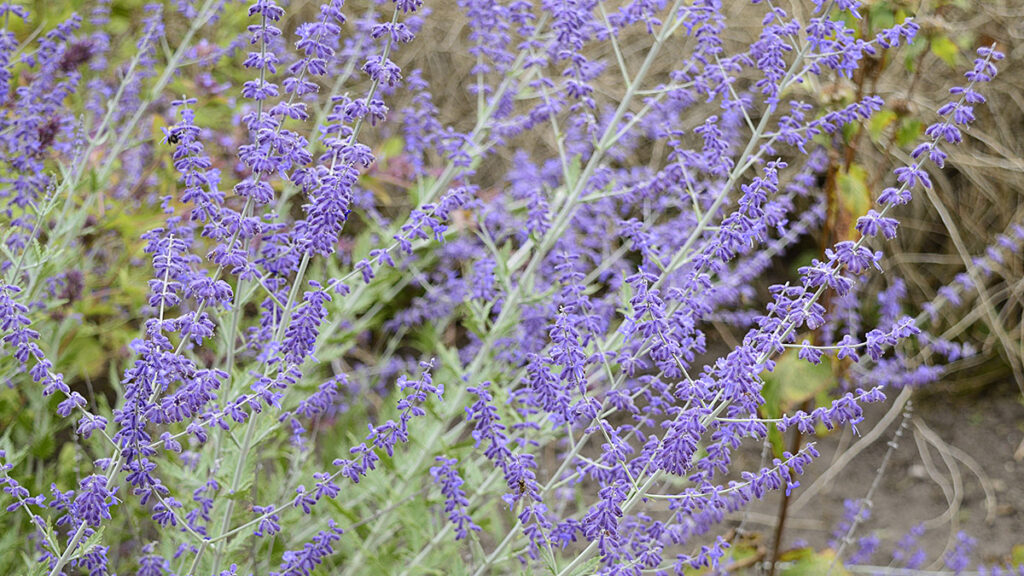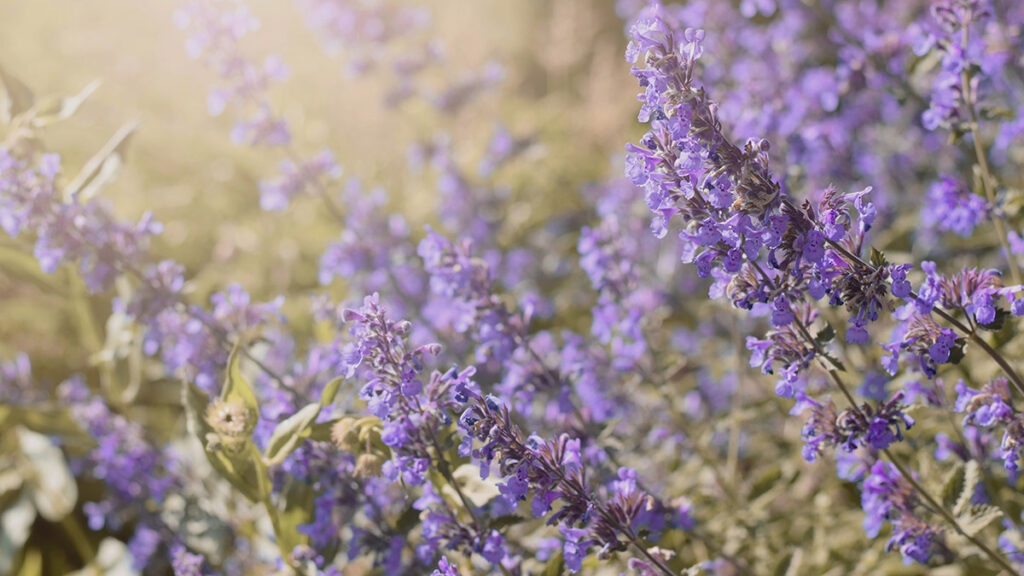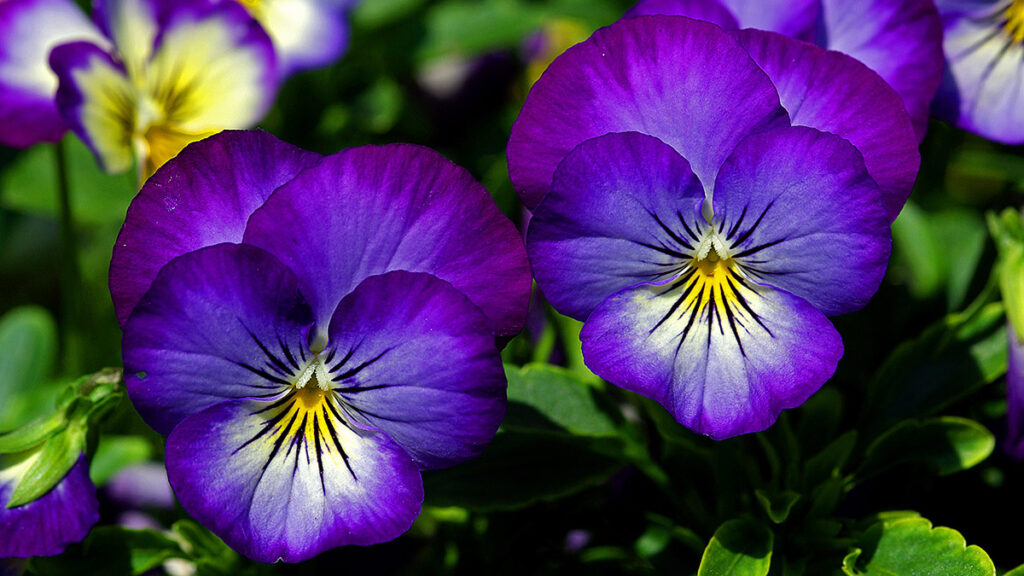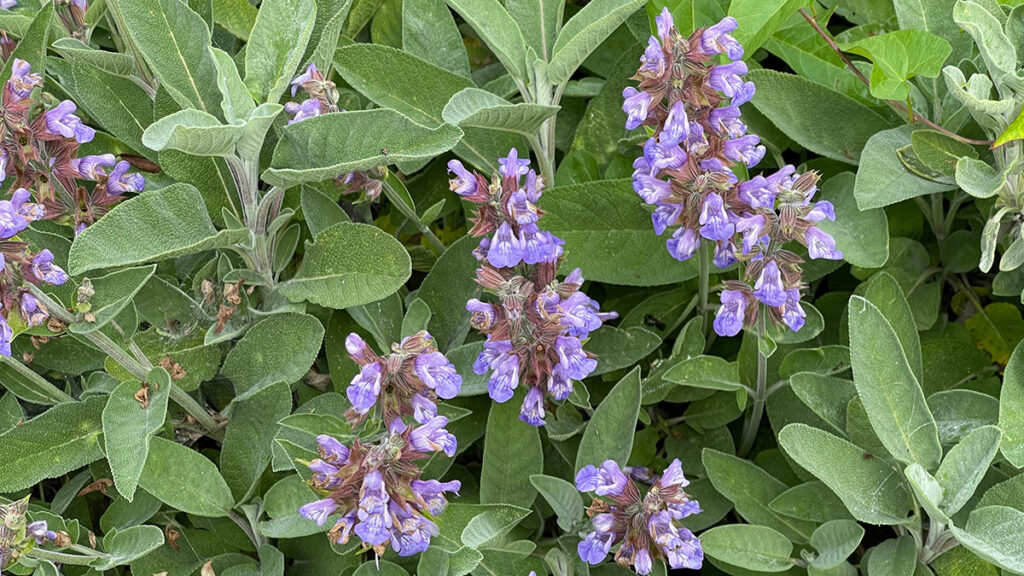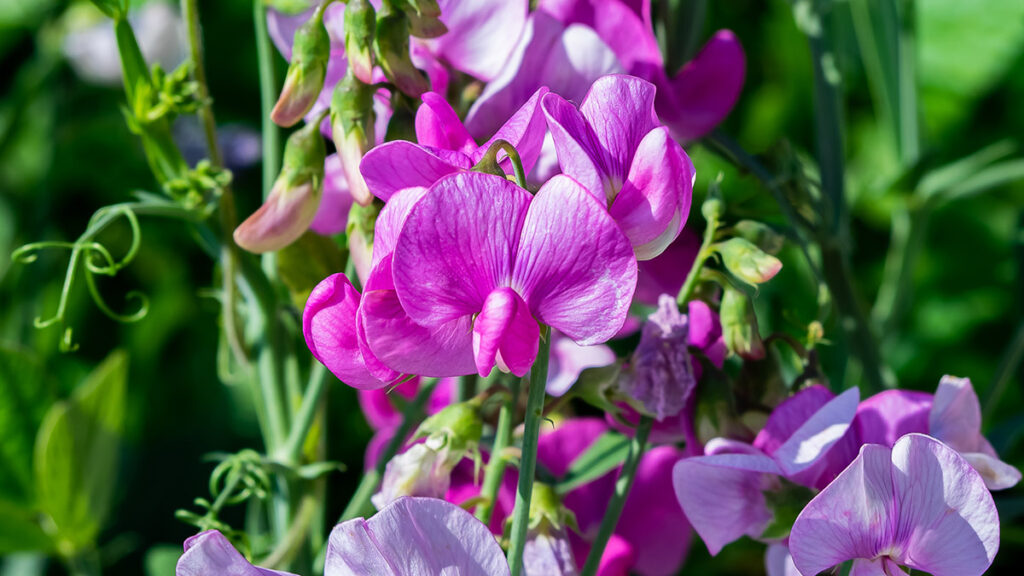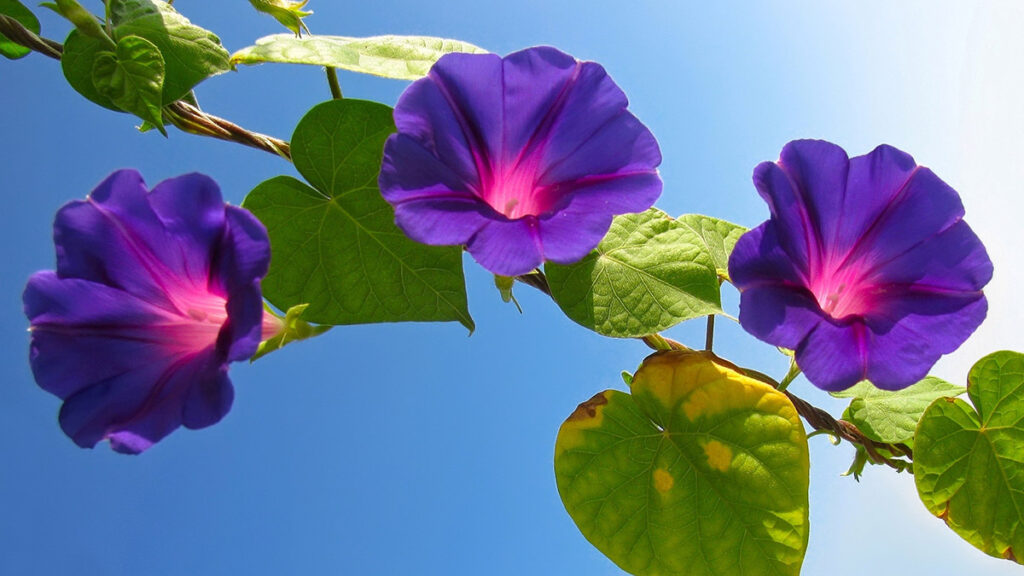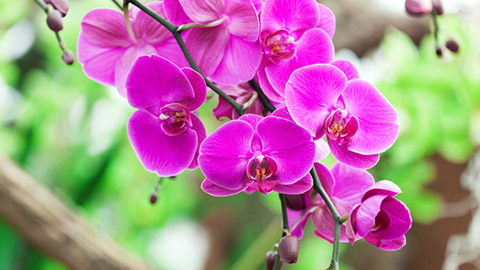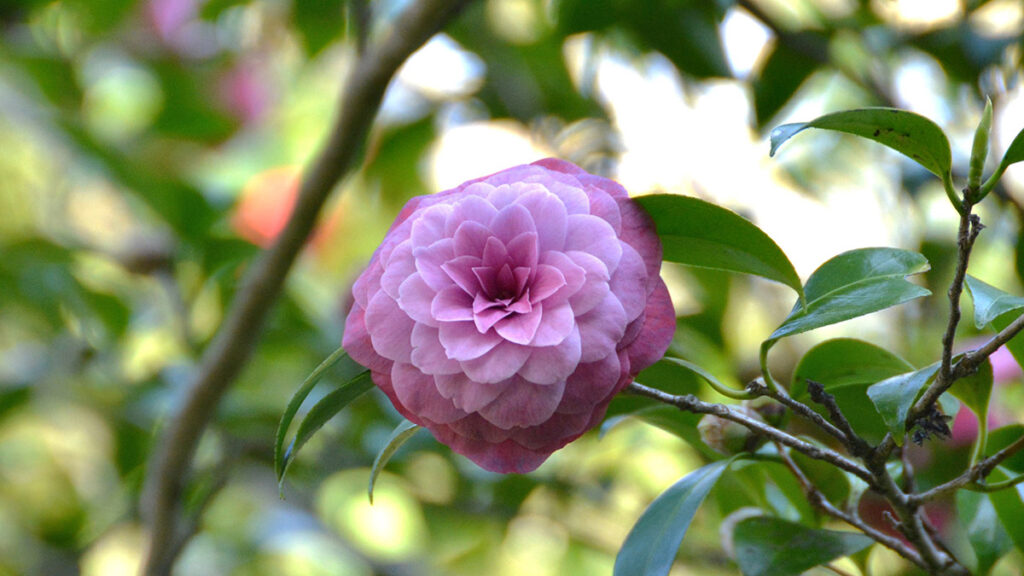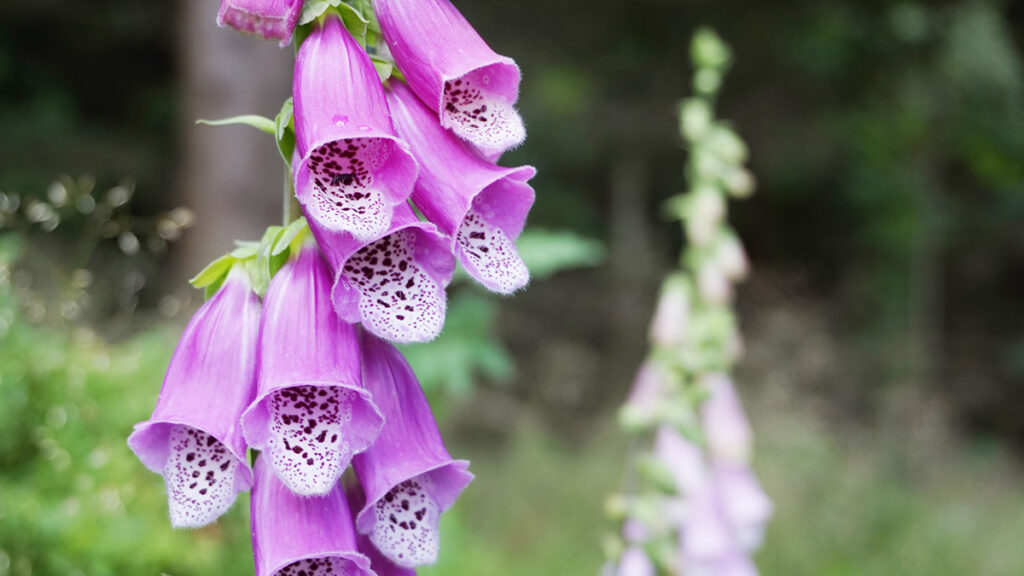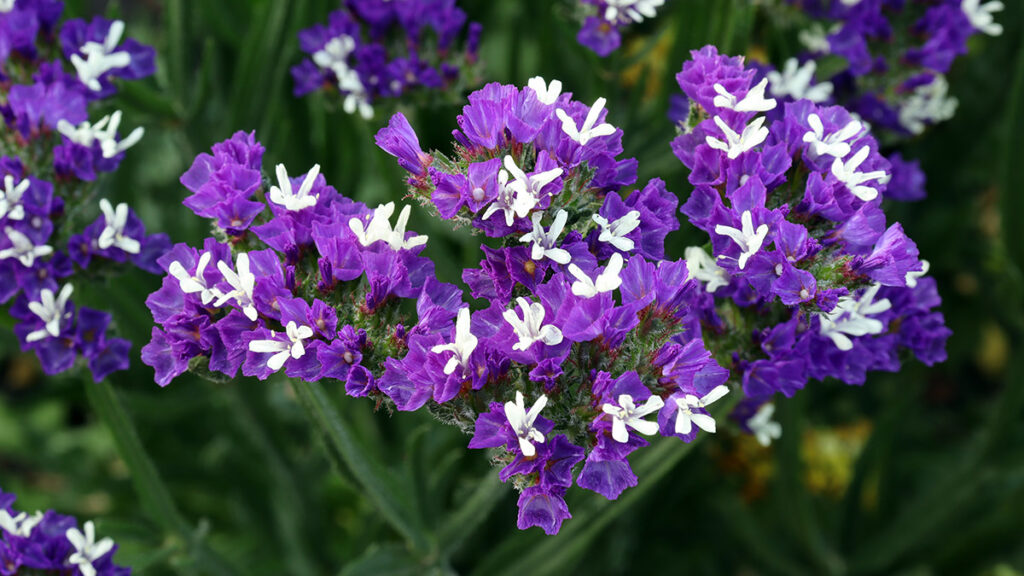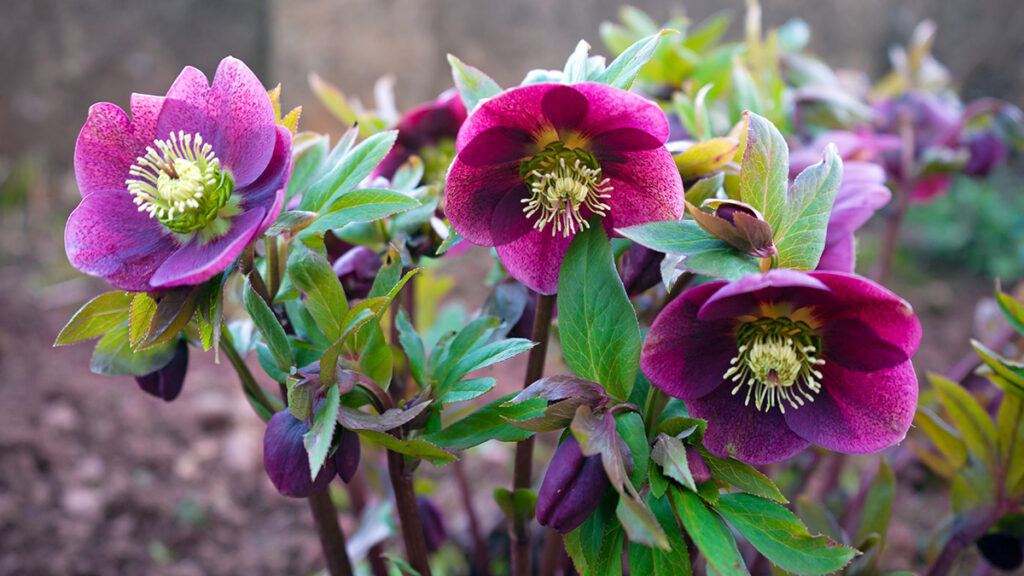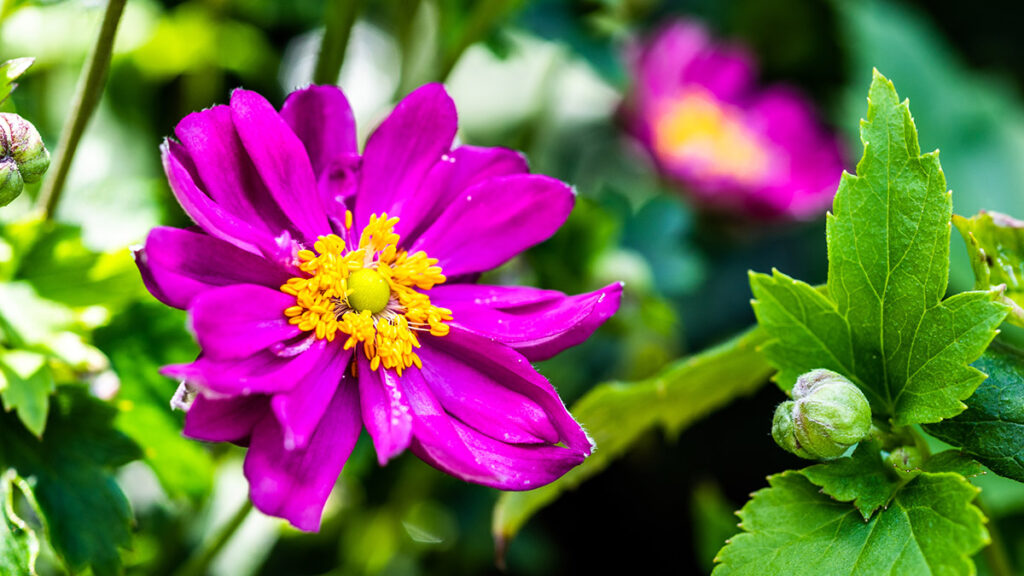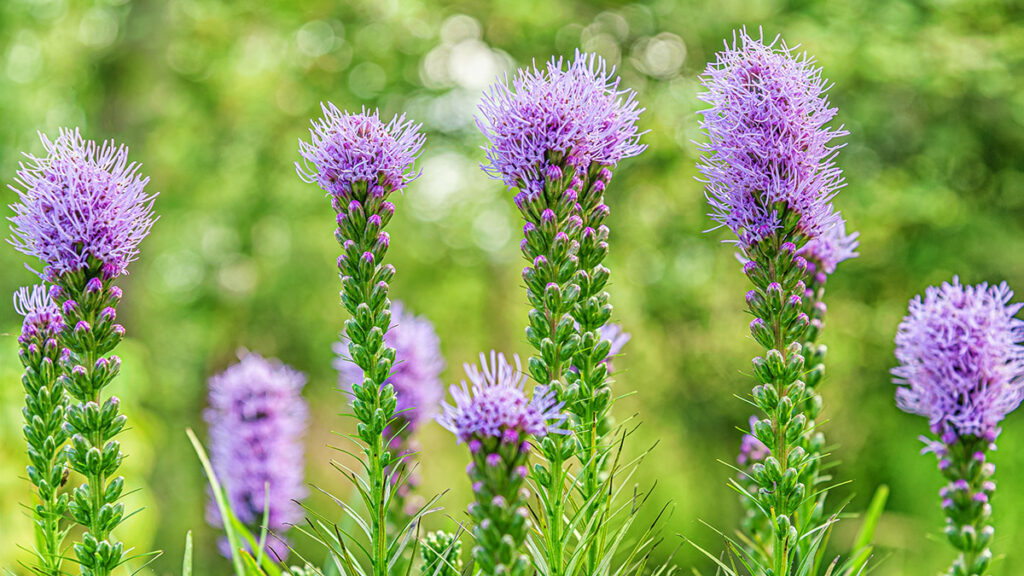Orange flowers add warmth, energy, and vibrancy to any garden. Their fiery hues can create a striking contrast or complement other colors in your landscape.
These 25 types of orange flowers come in a spectrum of shades and shapes to suit any style or climate. Whether aiming for a bold, tropical look or subtle pop of color, they serve as a versatile option for home gardeners. These attractive blooms — from hardy perennials to eye-catching annuals — will bring cheerfulness and vitality to wherever you plant them.
1. Marigold (Tagetes spp.)
Marigolds are beloved for their joyful orange and yellow blooms. They are easy to grow and make excellent companions for vegetable gardens.
Sun exposure: Full sun
Soil needs: Well-drained soil
USDA hardiness zones: Varies by species (typically 2-11)
Bloom time: Late spring to frost
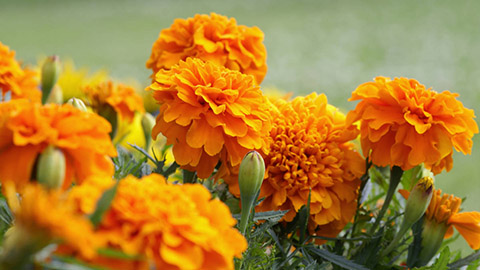
2. Daylily (Hemerocallis spp.)
Daylilies come in a variety of colors, including stunning orange shades. They are known for their low-maintenance care and prolific blooming.
Sun exposure: Full sun to part shade
Soil needs: Well-drained soil
USDA hardiness zones: Varies by species (typically 3-10)
Bloom time: Late spring to mid-summer
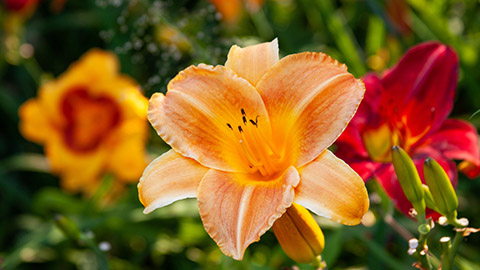
3. Tiger lily (Lilium lancifolium)
Boasting vibrant orange petals adorned with dark spots, tiger lilies bring an exotic touch to any garden.
Sun exposure: Full sun to part shade
Soil needs: Moist, well-drained soil
USDA hardiness zones: 4-9
Bloom time: Mid-summer
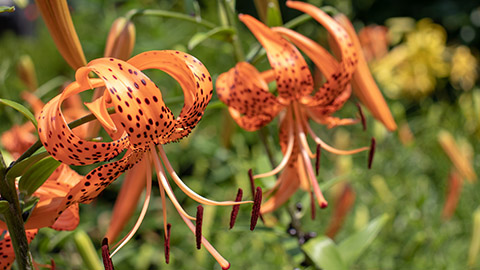
4. Zinnia (Zinnia elegans)
Zinnias produce bright, daisy-like flowers and are excellent for attracting pollinators.
Sun exposure: Full sun
Soil needs: Well-drained soil
USDA hardiness zones: 3-10
Bloom time: Summer to fall
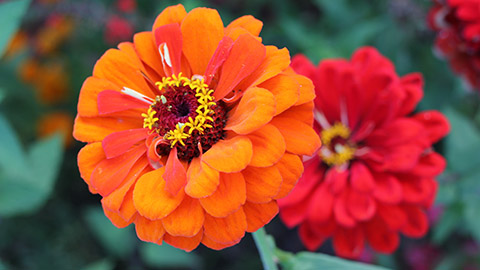
5. Mexican sunflower (Tithonia rotundifolia)
The dazzling, daisy-like blooms of Mexican sunflowers are well-known to attract pollinators of all kinds. These types of orange flowers can grow quite tall, making them ideal for the back of borders.
Sun exposure: Full sun
Soil needs: Well-drained soil
USDA hardiness zones: Typically grown as an annual (can be grown as a perennial in zones 9-11)
Bloom time: Summer to fall
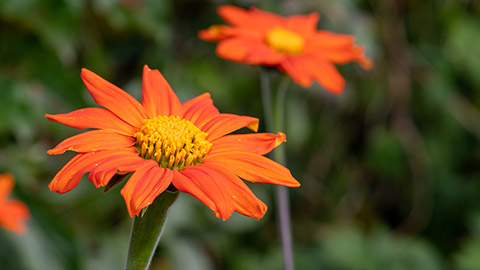
6. Blanket flower (Gaillardia spp.)
Blanket flowers feature vibrant orange and red hues that resemble the patterns of Native American blankets. They are drought tolerant and attract pollinators.
Sun exposure: Full sun
Soil needs: Well-drained soil
USDA hardiness zones: Varies by species (typically 3-10)
Bloom time: Late spring to frost
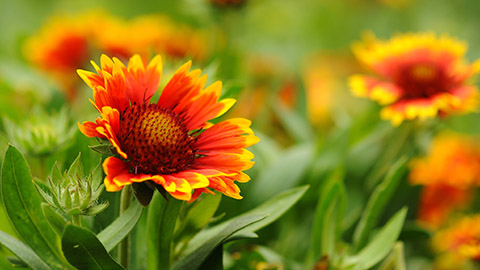
7. Canna lily (Canna spp.)
Canna lilies’ dramatic, tropical-looking foliage and striking flowers make them the perfect choice for adding a bold statement to your garden.
Sun exposure: Full sun to part shade
Soil needs: Moist, well-drained soil
USDA hardiness zones: 7-11
Bloom time: Summer to fall
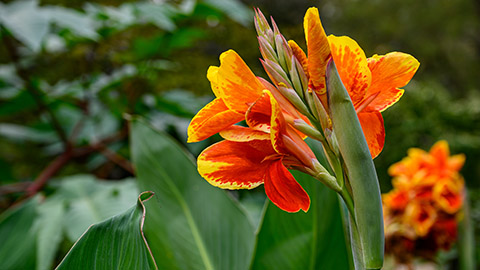
8. Calendula (Calendula officinalis)
Calendulas, also known as pot marigolds, display bright orange or yellow blooms. They are often used in herbal remedies and culinary dishes.
Sun exposure: Full sun to part shade
Soil needs: Well-drained soil
USDA hardiness zones: Typically grown as an annual (can be grown as a perennial in zones 9-11)
Bloom time: Spring to frost
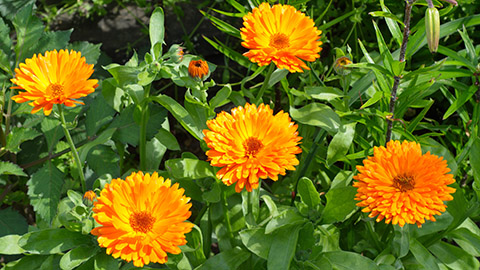
9. Poppy (Papaver spp.)
Though most commonly associated with the color red, poppies also come in stunning orange varieties. They have delicate, papery petals and are known for their fleeting beauty.
Sun exposure: Full sun
Soil needs: Well-drained soil
USDA hardiness zones: Varies by species (typically 3-7)
Bloom time: Late spring to early summer
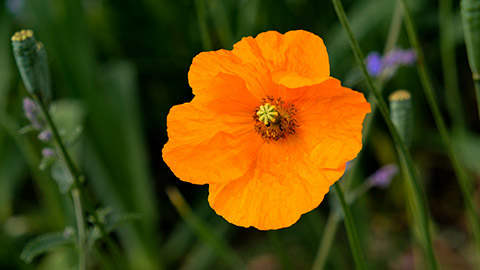
10. Crocosmia (Crocosmia spp.)
Producing arching spikes of bright orange or red-orange flowers, crocosmias (often called montbretia) add elegance to borders and cut flower arrangements.
Sun exposure: Full sun to part shade
Soil needs: Well-drained soil
USDA hardiness zones: Varies by species (typically 6-9)
Bloom time: Summer to early fall
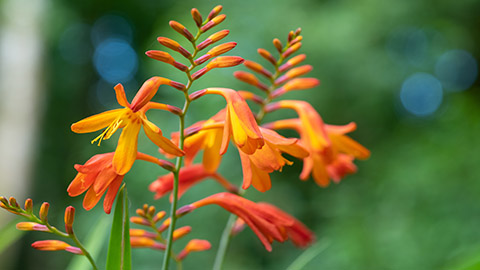
11. Helenium (Helenium spp.)
Heleniums, also known as sneezeweeds, feature richly colored blossoms of many colors, including orange. They are excellent for attracting butterflies and bees.
Sun exposure: Full sun to part shade
Soil needs: Moist, well-drained soil
USDA hardiness zones: Varies by species (typically 3-8)
Bloom time: Late summer to early fall
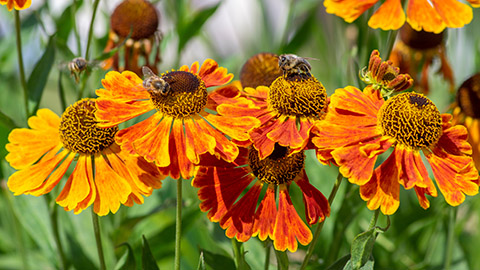
12. Echinacea (Echinacea purpurea)
While purple is the most common color for this flower, some echinacea varieties produce stunning orange blooms. These coneflowers are popular for being drought tolerance and attracting wildlife.
Sun exposure: Full sun to part shade
Soil needs: Well-drained soil
USDA hardiness zones: 3-9
Bloom time: Summer to fall
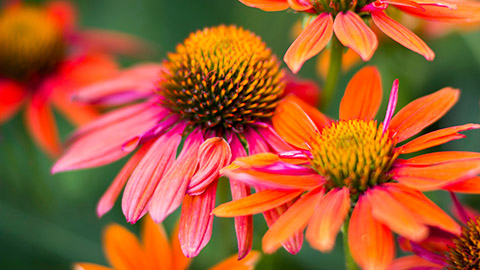
13. Nasturtium (Tropaeolum majus)
Nasturtiums offer eatable, peppery leaves and vibrant orange, red, or yellow flowers. They are great for hanging baskets and borders, and are one of the best flowers at repelling bugs.
Sun exposure: Full sun
Soil needs: Well-drained soil
USDA hardiness zones: Typically grown as an annual (can be grown as a perennial in zones 9-11)
Bloom time: Spring to frost
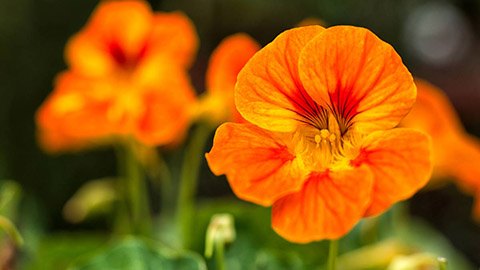
14. Geum (Geum spp.)
Producing charming, semi-double flowers, geums (also known as avens) are excellent additions to cottage gardens and rockeries.
Sun exposure: Full sun to part shade
Soil needs: Well-drained soil
USDA hardiness zones: Varies by species (typically 4-7)
Bloom time: Late spring to early summer
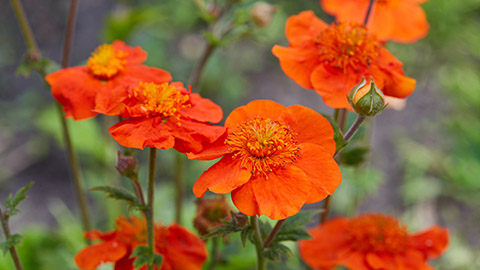
15. Hibiscus (Hibiscus spp.)
Hibiscus plants, including the hardy perennial varieties, showcase large, tropical-looking flowers in various shades, including orange.
Sun exposure: Full sun to part shade
Soil needs: Moist, well-drained soil
USDA hardiness zones: Varies by species (typically 5-9)
Bloom time: Summer to early fall
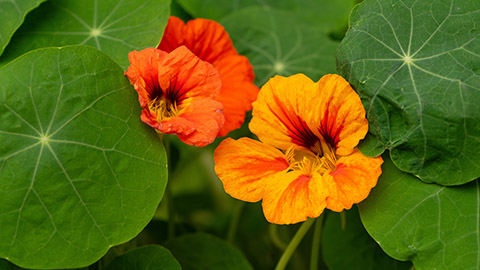
16. Lantana (Lantana spp.)
Lantanas produce clusters of tiny, tubular flowers. They are butterfly magnets and thrive in hot, sunny conditions.
Sun exposure: Full sun
Soil needs: Well-drained soil
USDA hardiness zones: Varies by species (typically 8-11)
Bloom time: Spring to frost
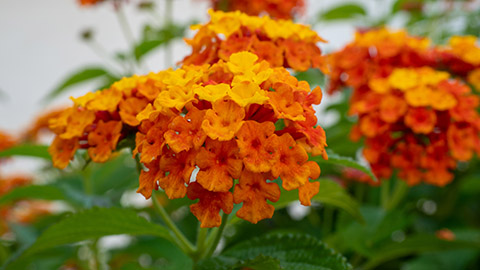
17. Trumpet vine (Campsis spp.)
Famous for attracting hummingbirds, trumpet vines are types of orange flowers that feature large — you guessed it — trumpet-shaped blossoms. They are vigorous climbers, making them ideal for trellises and fences.
Sun exposure: Full sun
Soil needs: Well-drained soil
USDA hardiness zones: Varies by species (typically 4-10)
Bloom time: Summer to fall
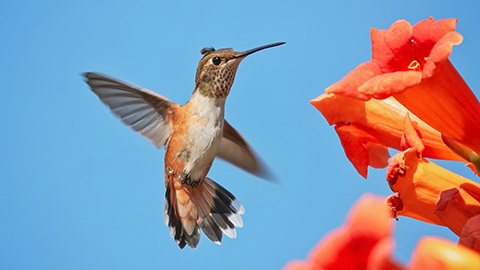
18. Coreopsis (Coreopsis spp.)
Coreopsis, also known as tickseed, offers bright yellow and orange daisy-like flowers. They are excellent for borders and wildflower gardens.
Sun exposure: Full sun
Soil needs: Well-drained soil
USDA hardiness zones: Varies by species (typically 4-9)
Bloom time: Summer to early fall
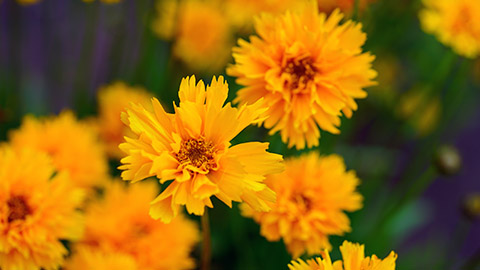
19. Black-eyed Susan (Rudbeckia spp.)
While most black-eyed Susan varieties are yellow, some have striking orange or bronze petals. These classic and much-beloved flowers are great for naturalizing in meadows or growing in a garden.
Sun exposure: Full sun to part shade
Soil needs: Well-drained soil
USDA hardiness zones: Varies by species (typically 3-9)
Bloom time: Summer to fall
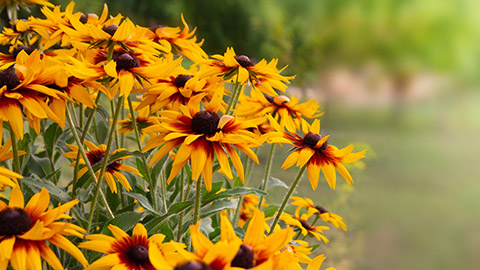
20. Honeysuckle (Lonicera spp.)
Some honeysuckle varieties, like Lonicera sempervirens, display clusters of tubular, orange-red flowers. Hummingbirds are drawn to these fragrant flowers.
Sun exposure: Full sun to part shade
Soil needs: Moist, well-drained soil
USDA hardiness zones: Varies by species (typically 4-10)
Bloom time: Spring to summer
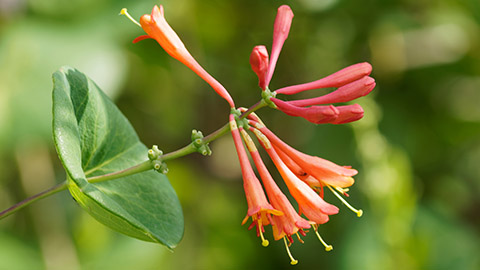
21. Butterfly weed (Asclepias tuberosa)
This native perennial boasts clusters of vibrant orange flowers that attract pollinators, especially butterflies. Its narrow, lance-shaped leaves add texture to a garden.
Sun exposure: Full sun
Soil needs: Well-drained, sandy soil
USDA hardiness zones: 4-10
Bloom time: Summer to early fall
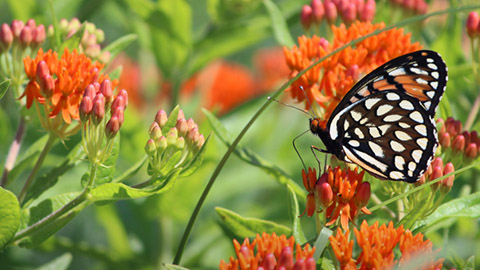
22. Begonia (Begonia spp.)
Prized for their colorful foliage and unique, tuberous flowers, begonias are often used in containers and hanging baskets.
Sun exposure: Part shade to full shade
Soil needs: Well-drained soil
USDA hardiness zones: Varies by species (typically 9-11)
Bloom time: Spring to frost
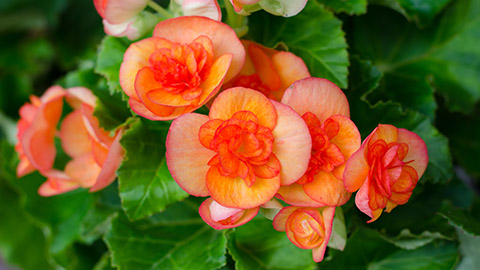
23. Japanese lantern (Physalis alkekengi)
Japanese lantern plants produce bright orange, lantern-like seed pods in late summer and fall. They are excellent for dried flower arrangements.
Sun exposure: Full sun to part shade
Soil needs: Well-drained soil
USDA hardiness zones: 3-9
Bloom time: Summer to fall
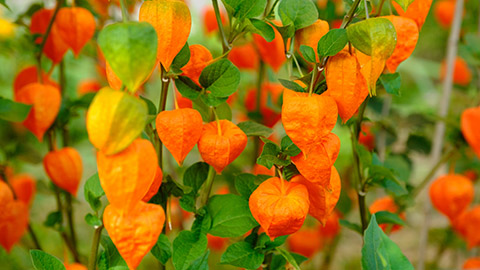
24. Iris (Iris spp.)
While typically associated with blue or purple, some iris varieties, such as “Orange Harvest,” display stunning orange blooms.
Sun exposure: Full sun to part shade
Soil needs: Moist, well-drained soil
USDA hardiness zones: Varies by species (typically 3-9)
Bloom time: Spring to early summer
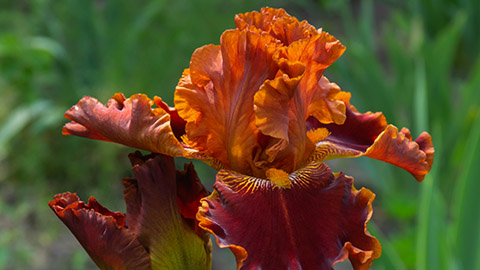
25. Tulip (Tulipa spp.)
Tulips come in various colors, including vibrant orange. They are a symbol of spring and often herald the arrival of warmer weather.
Sun exposure: Full sun
Soil needs: Well-drained soil
USDA hardiness zones: Varies by species (typically 3-8)
Bloom time: Spring
